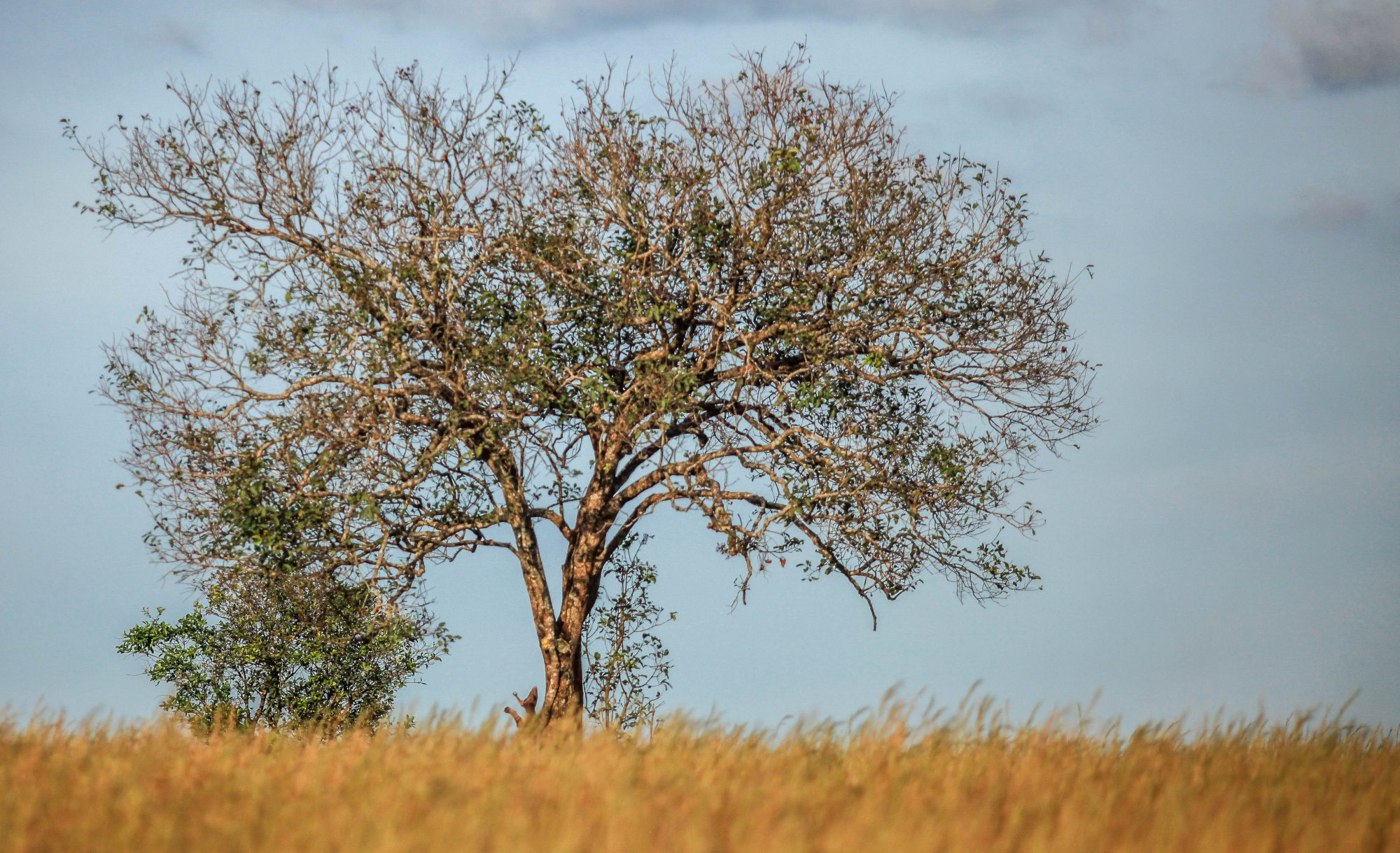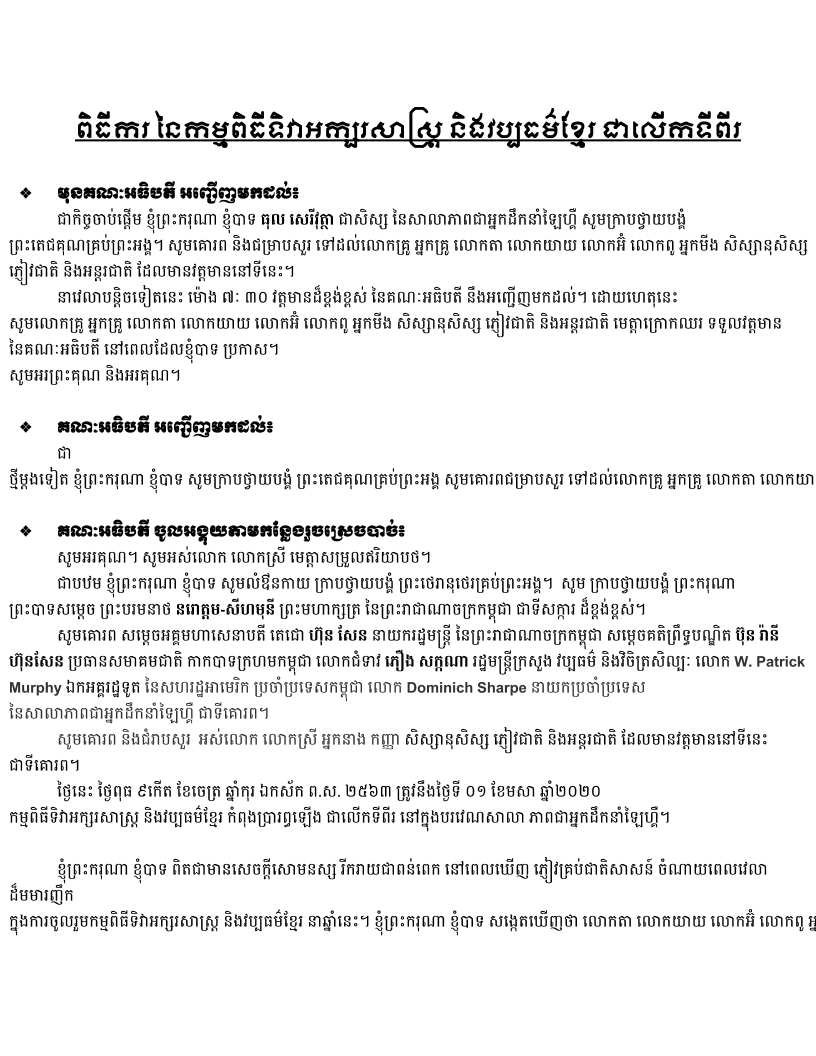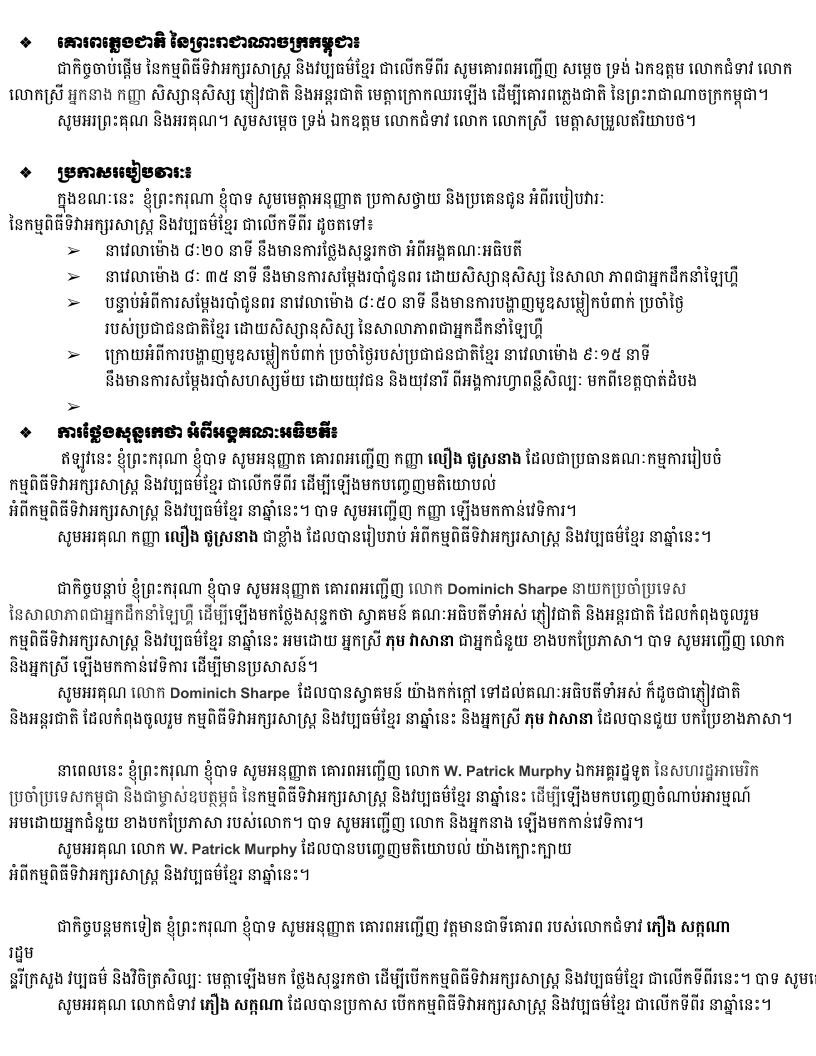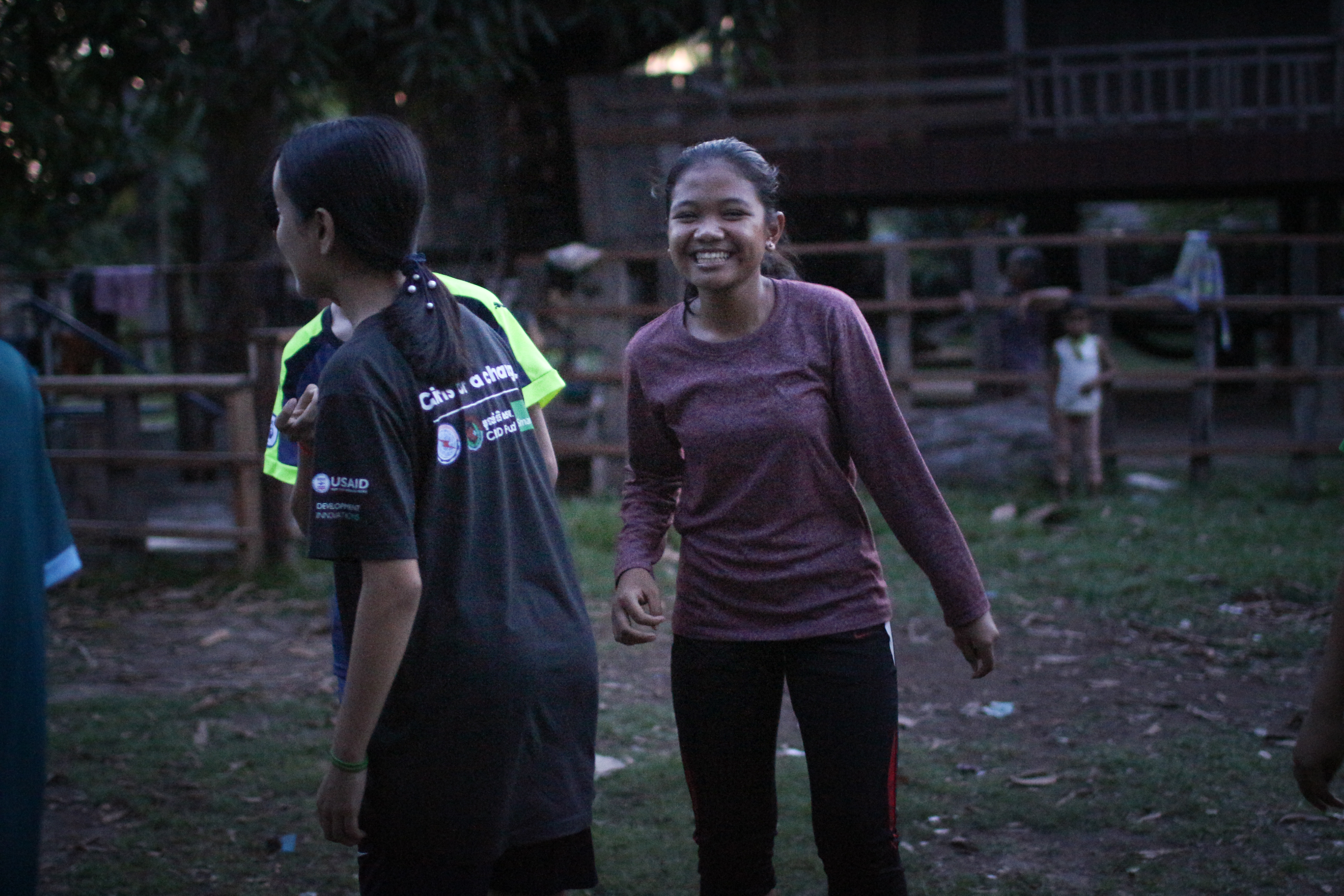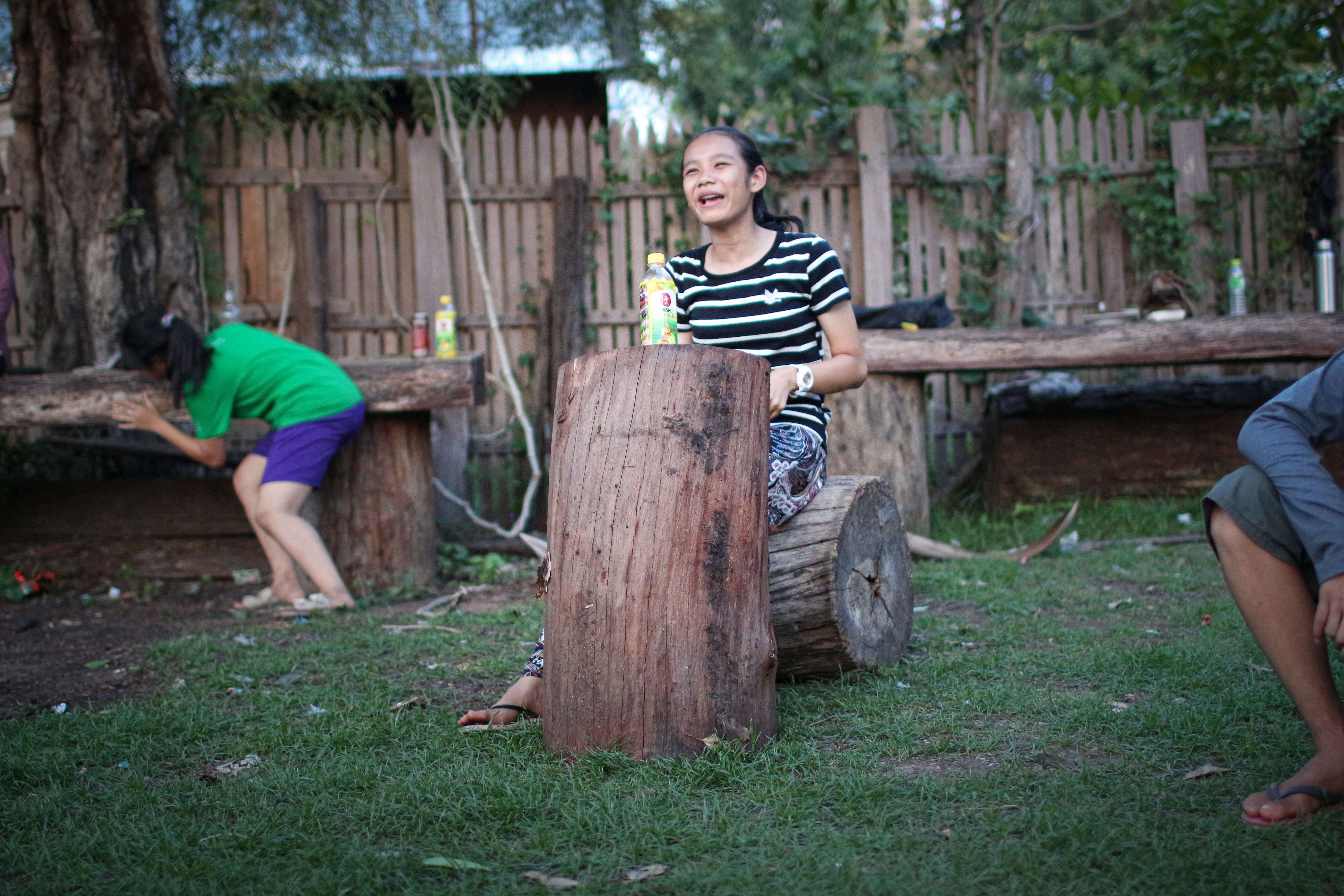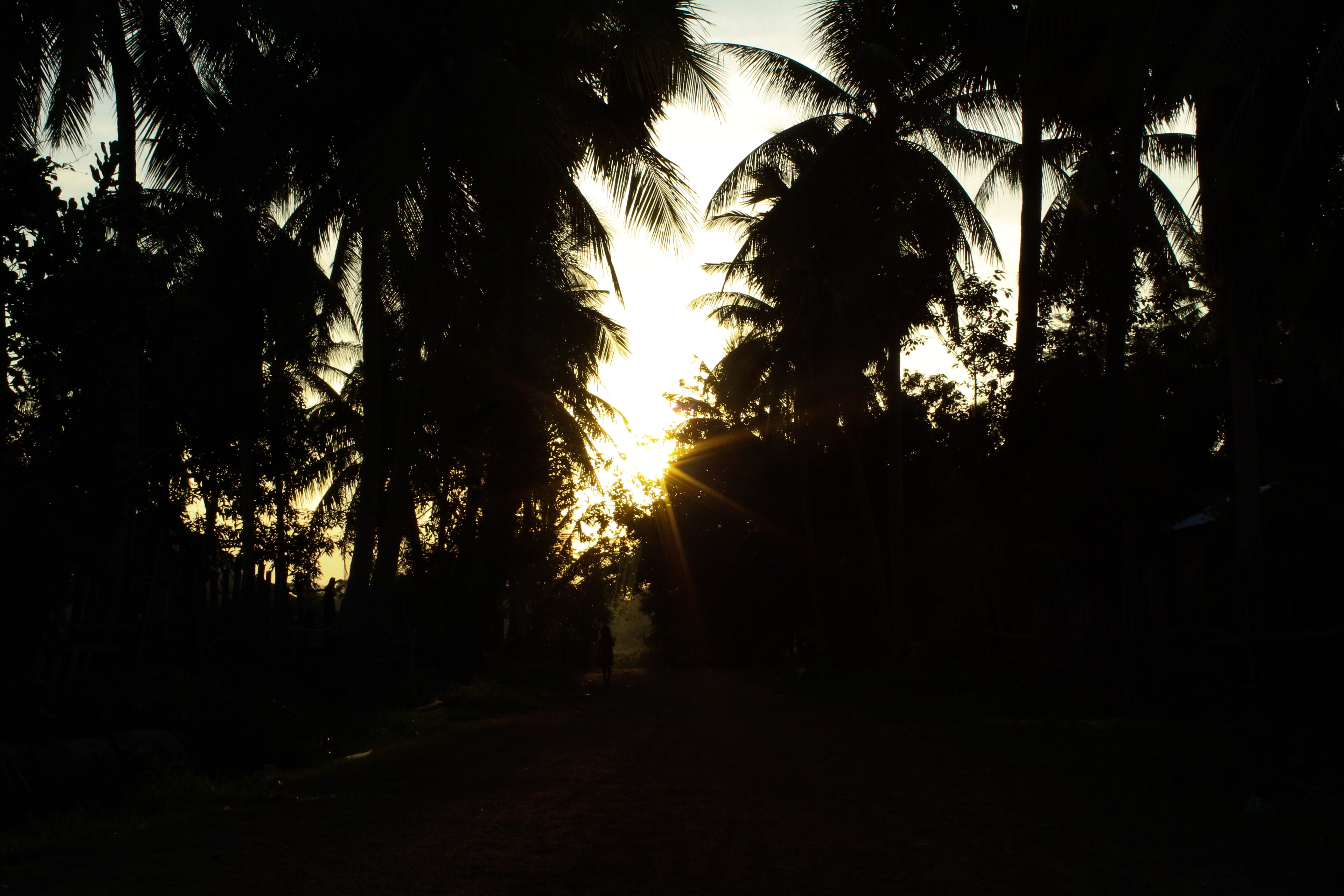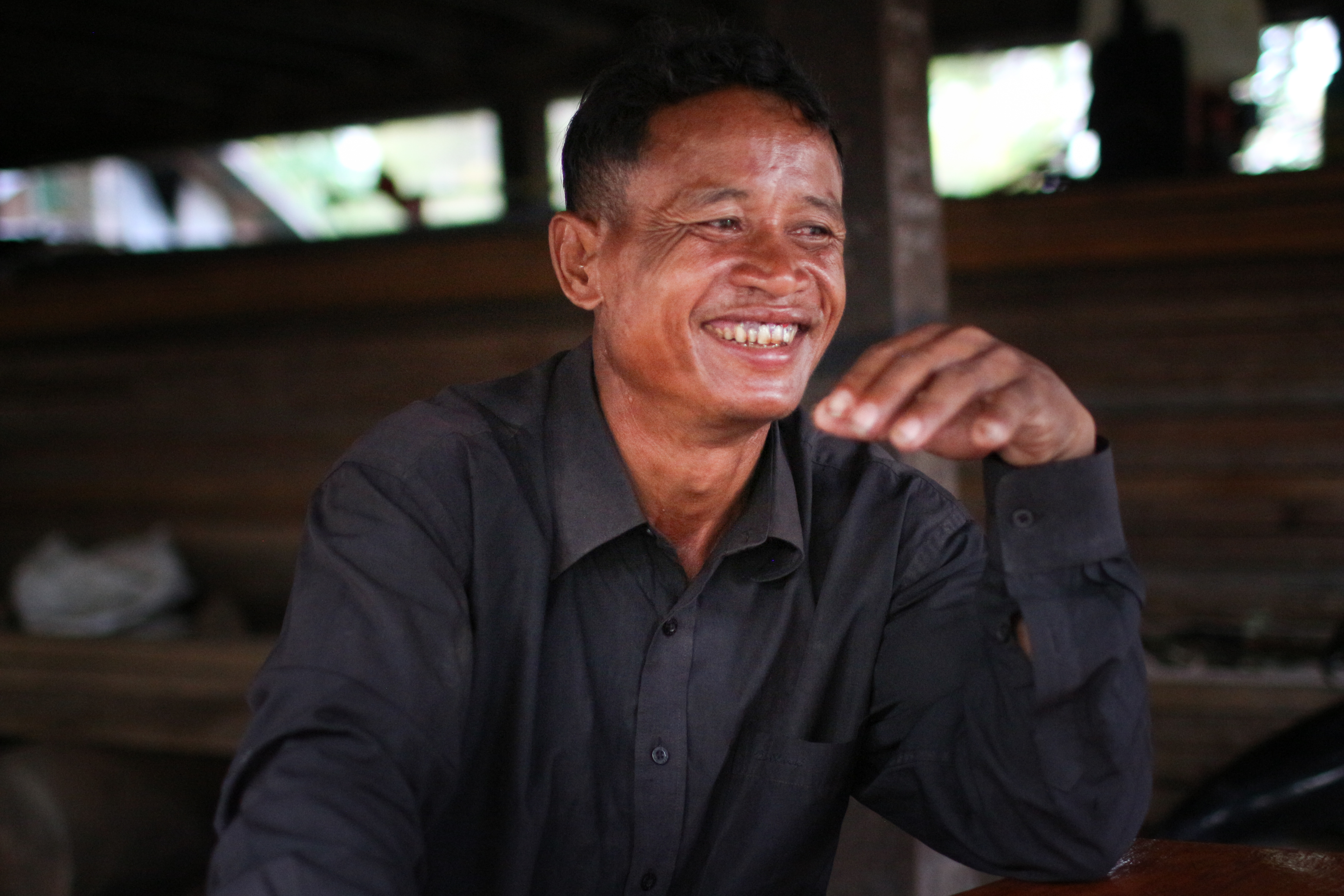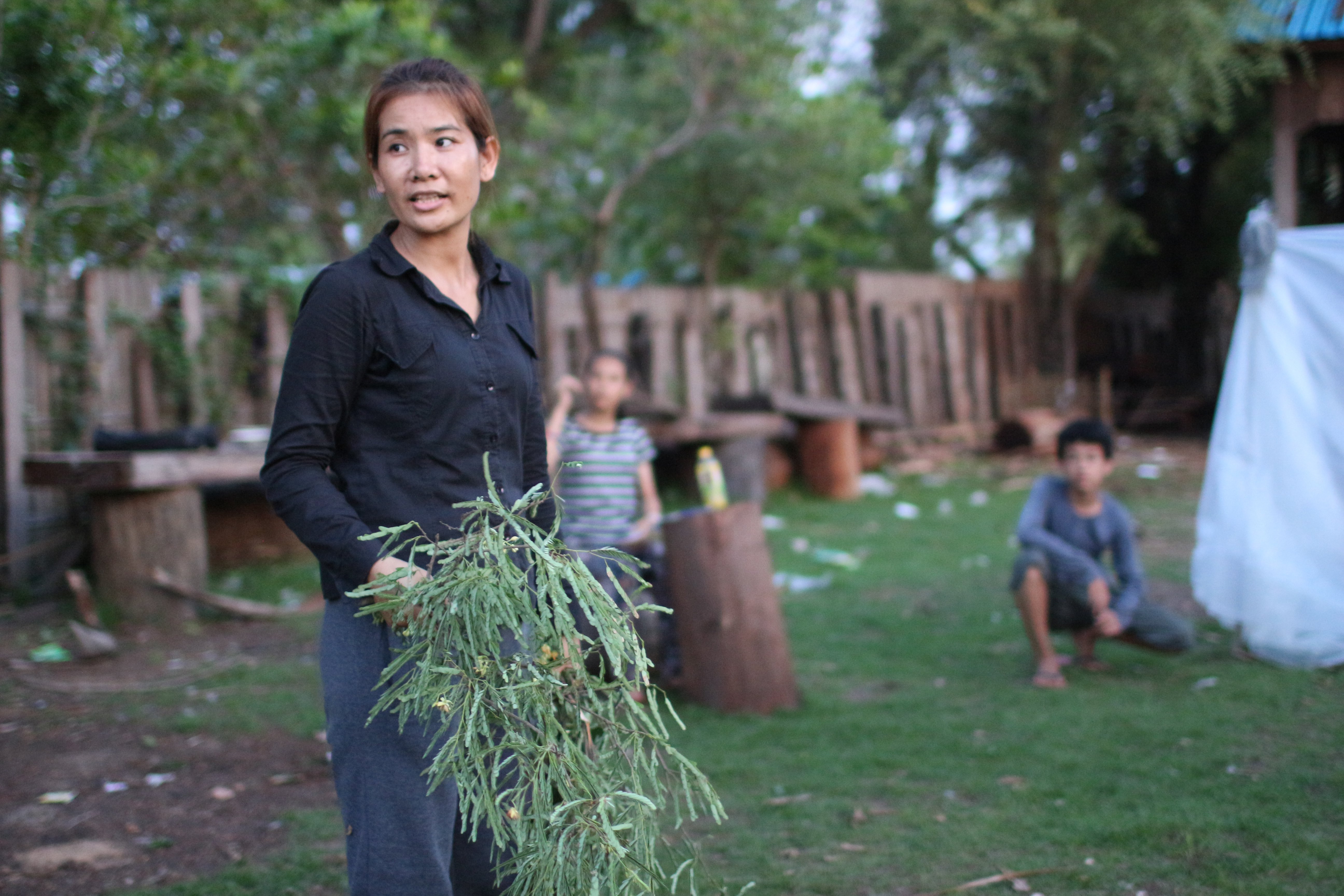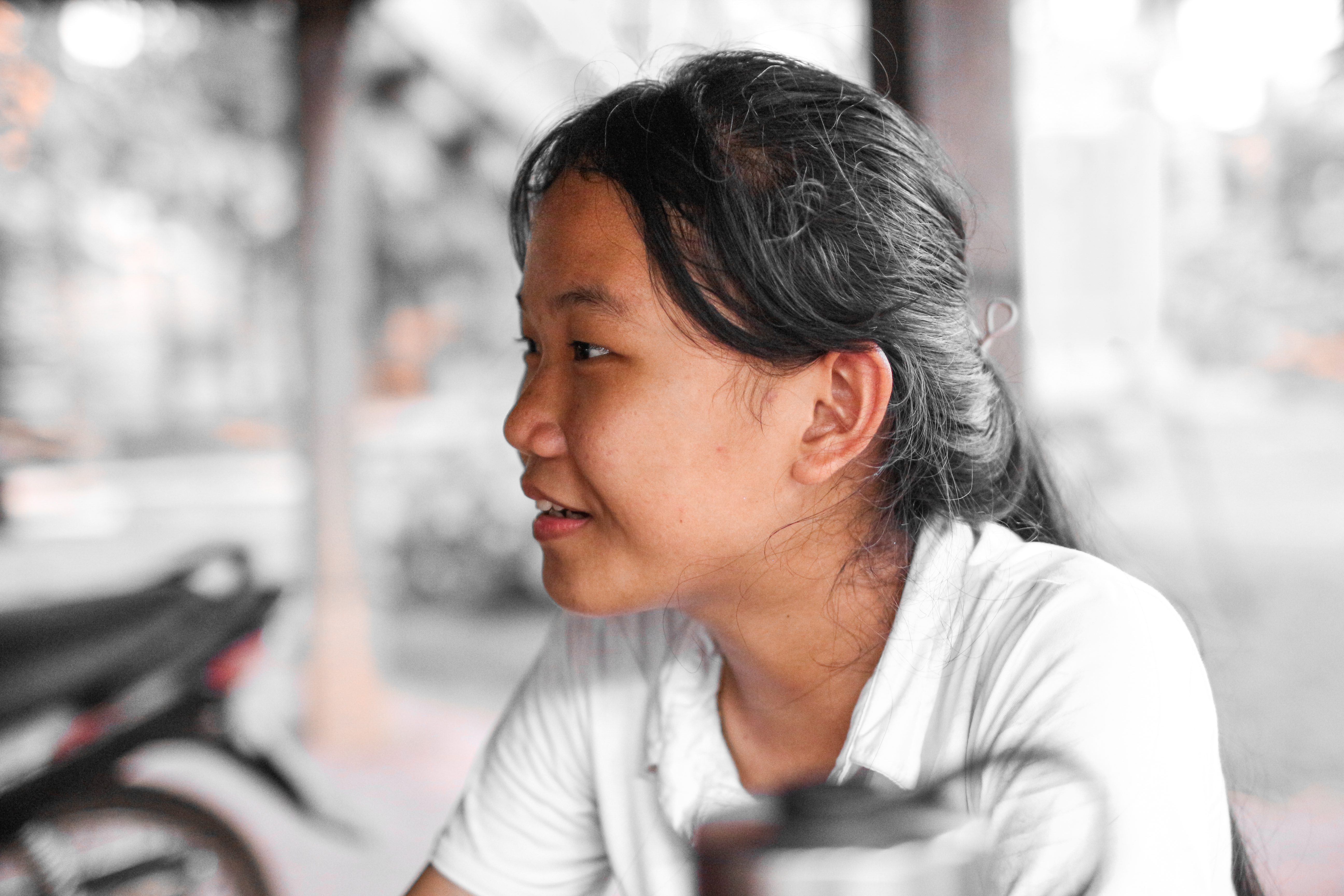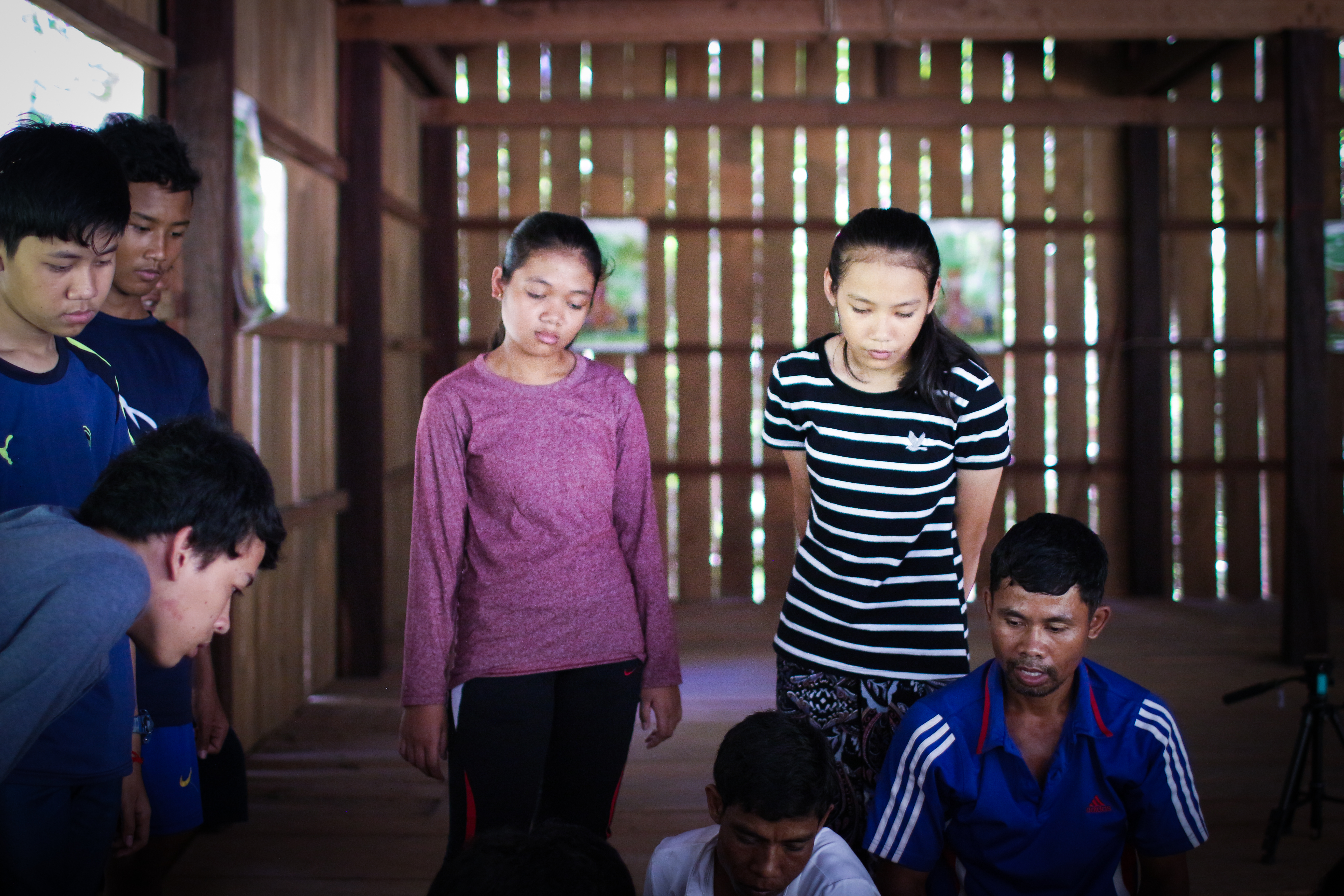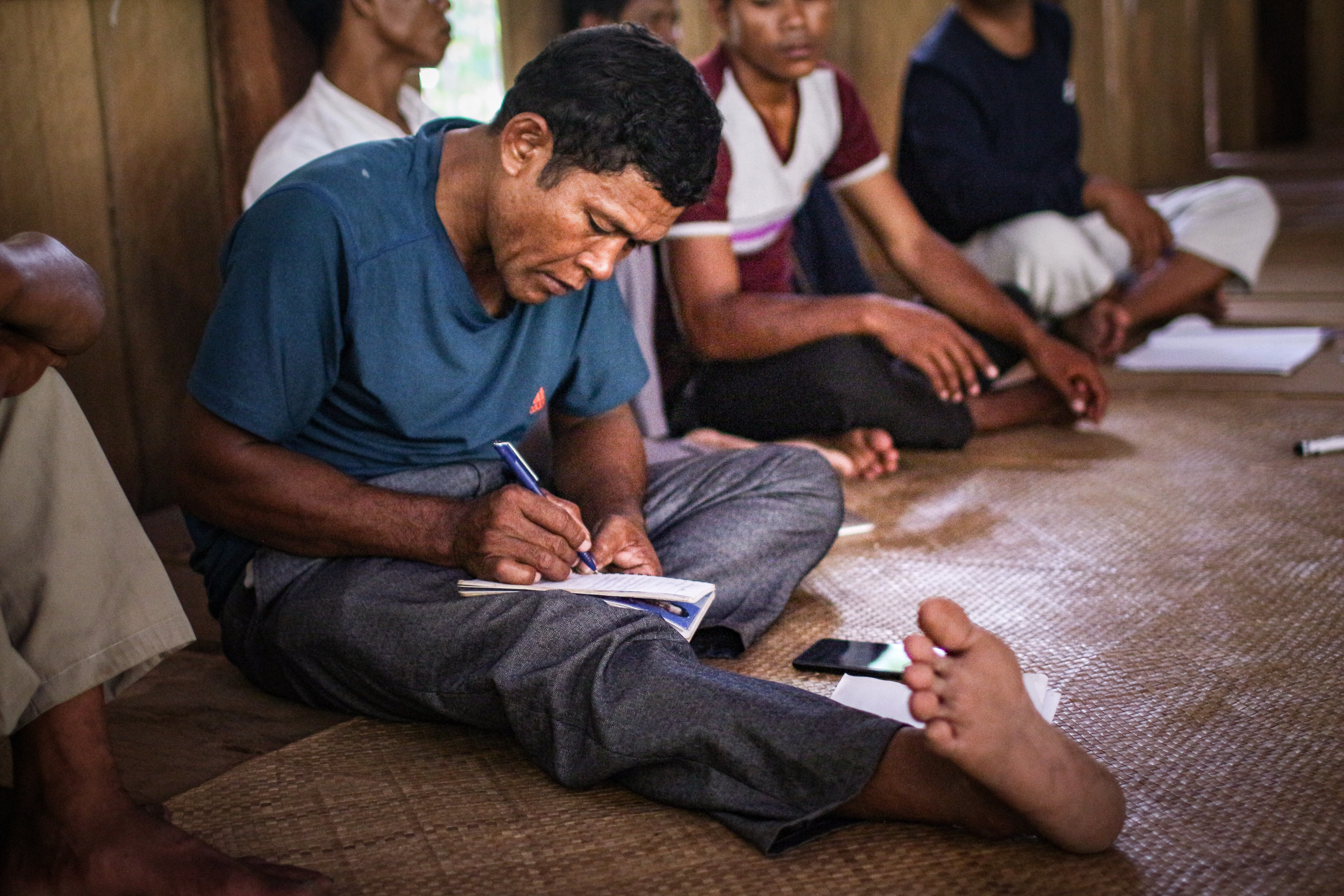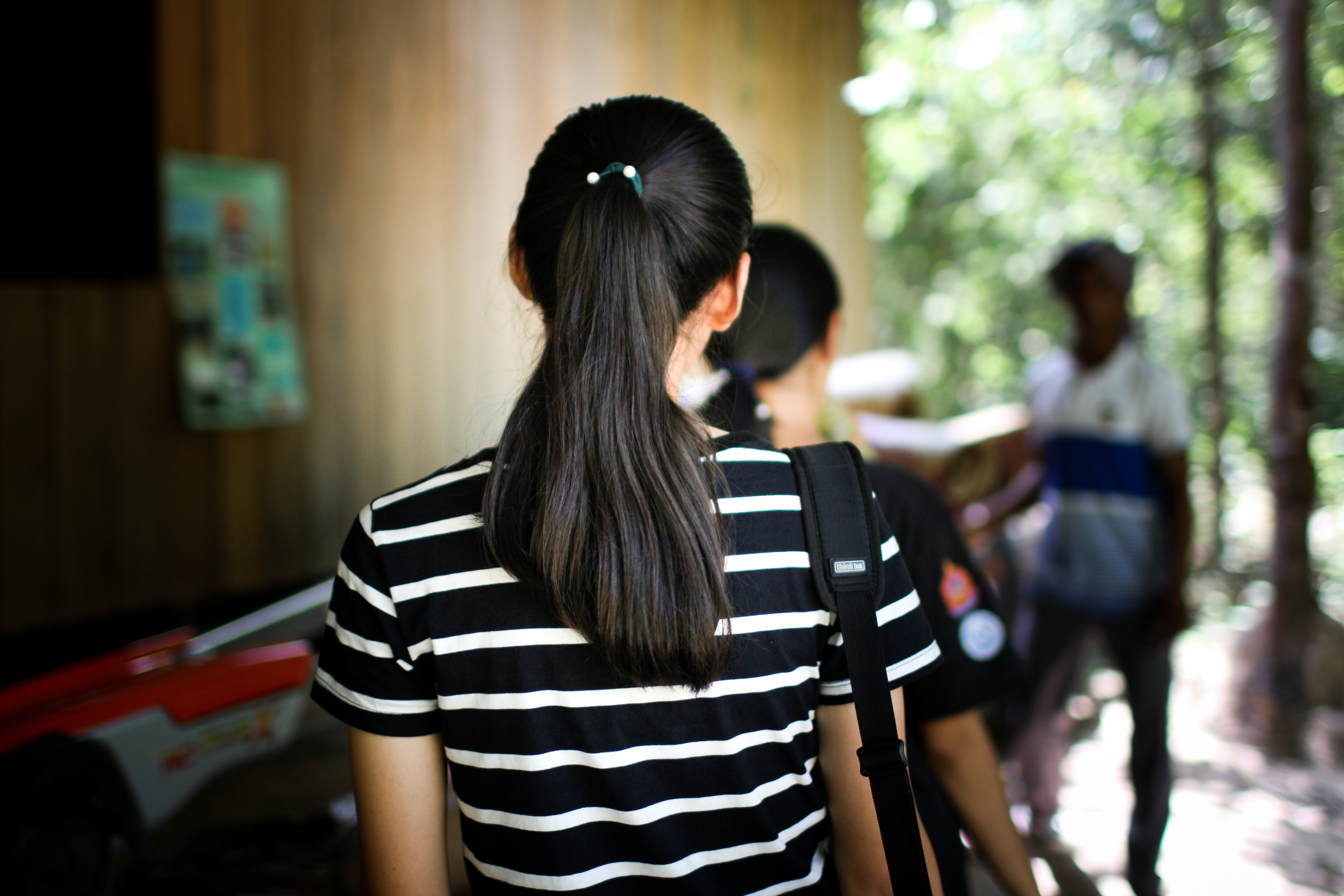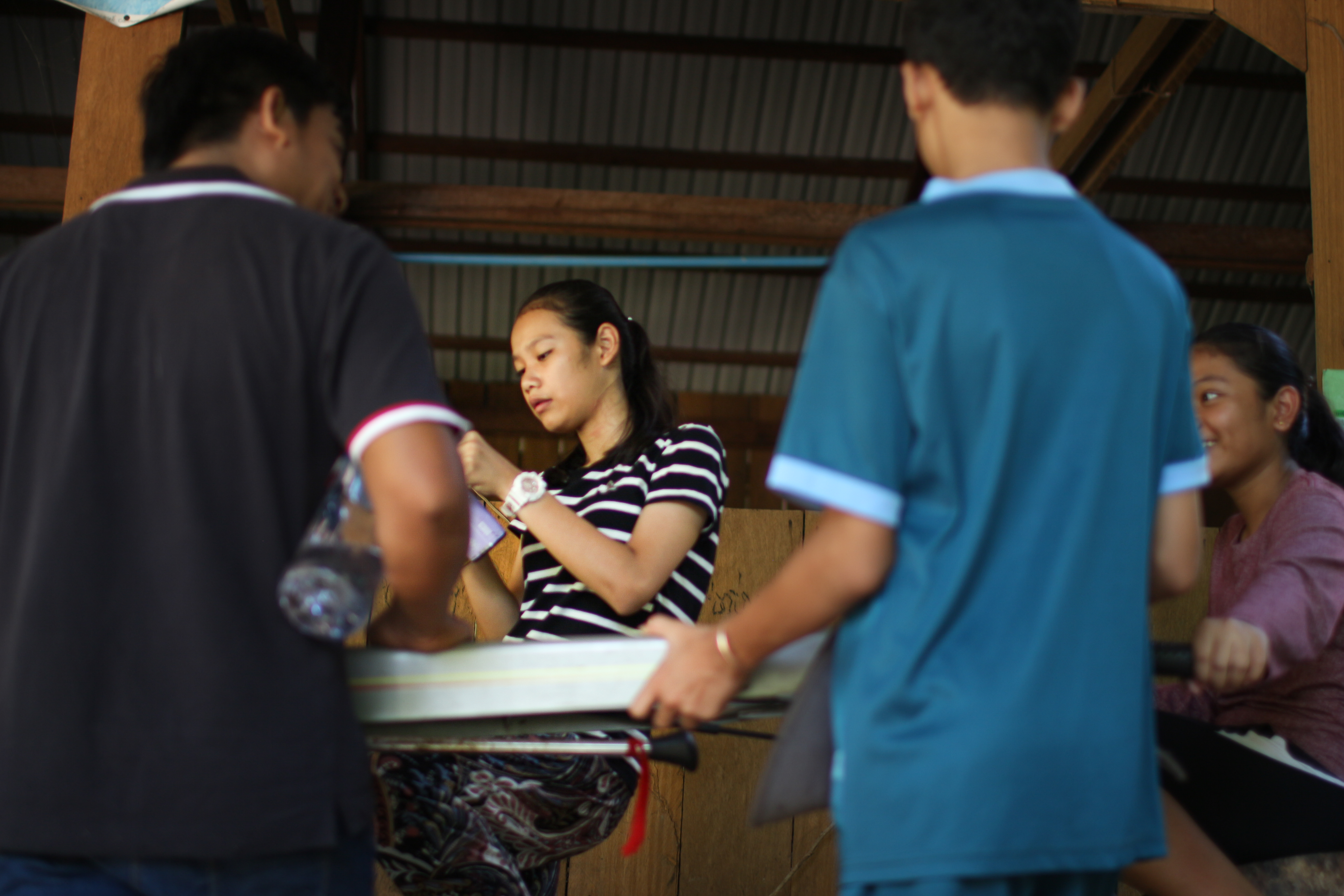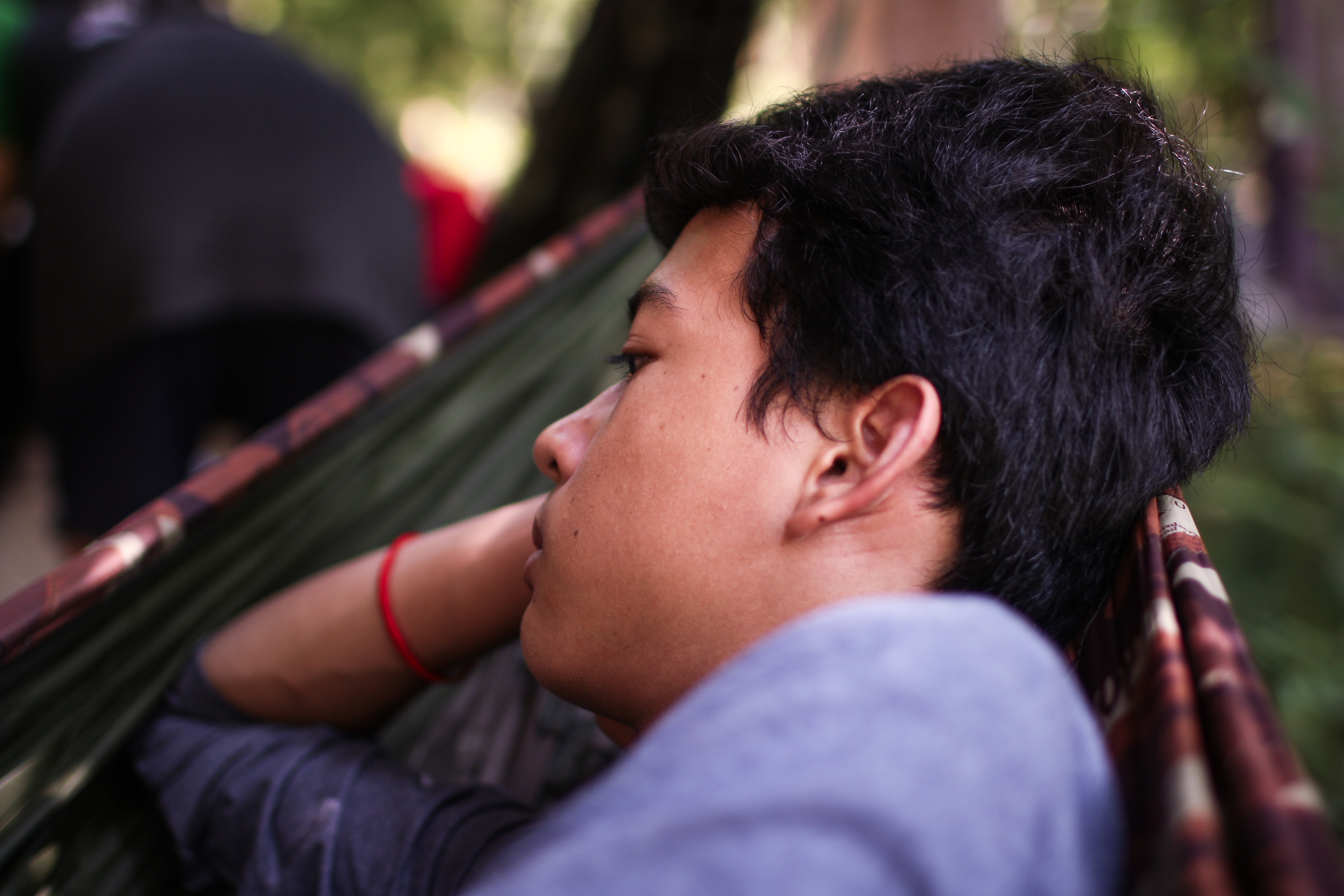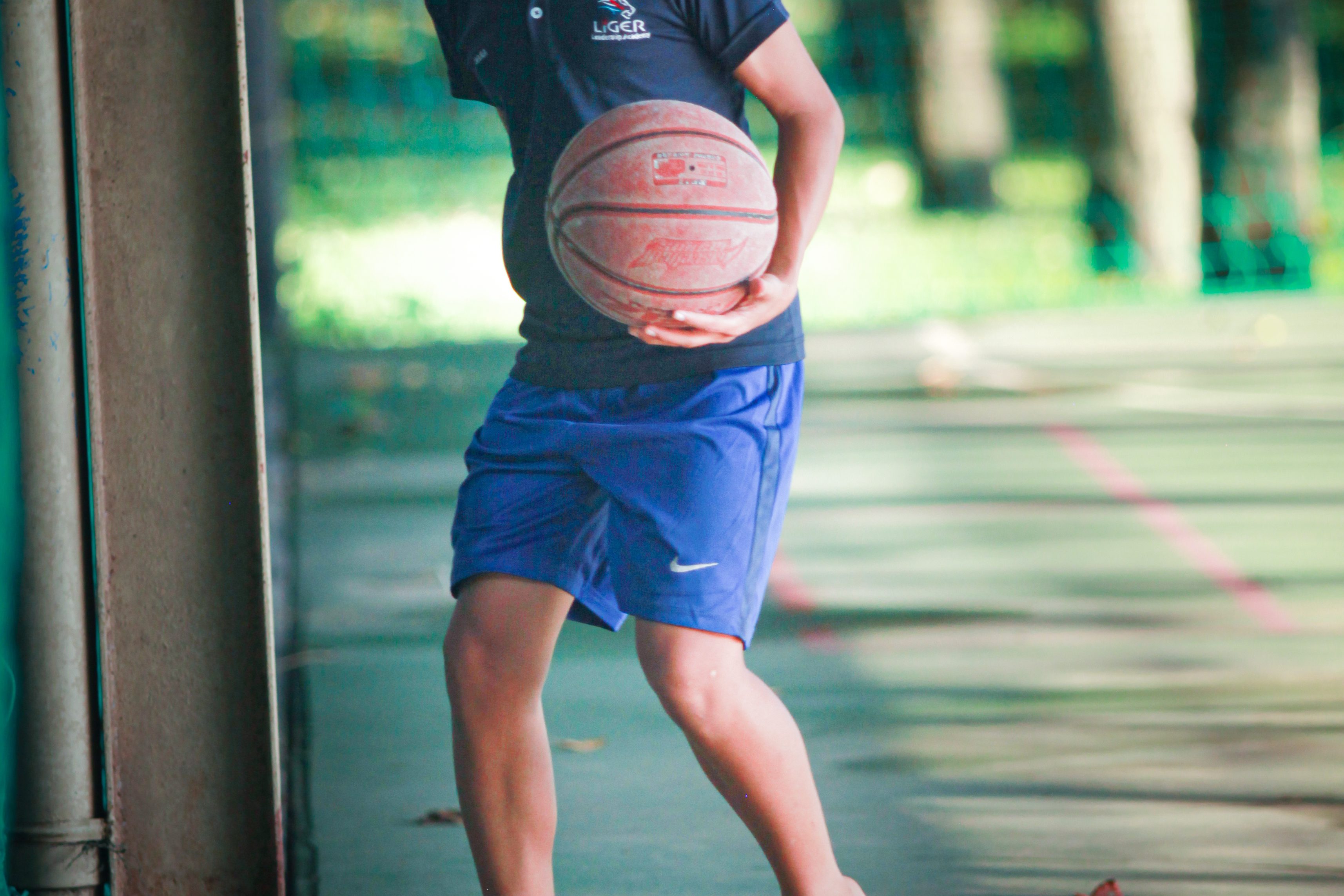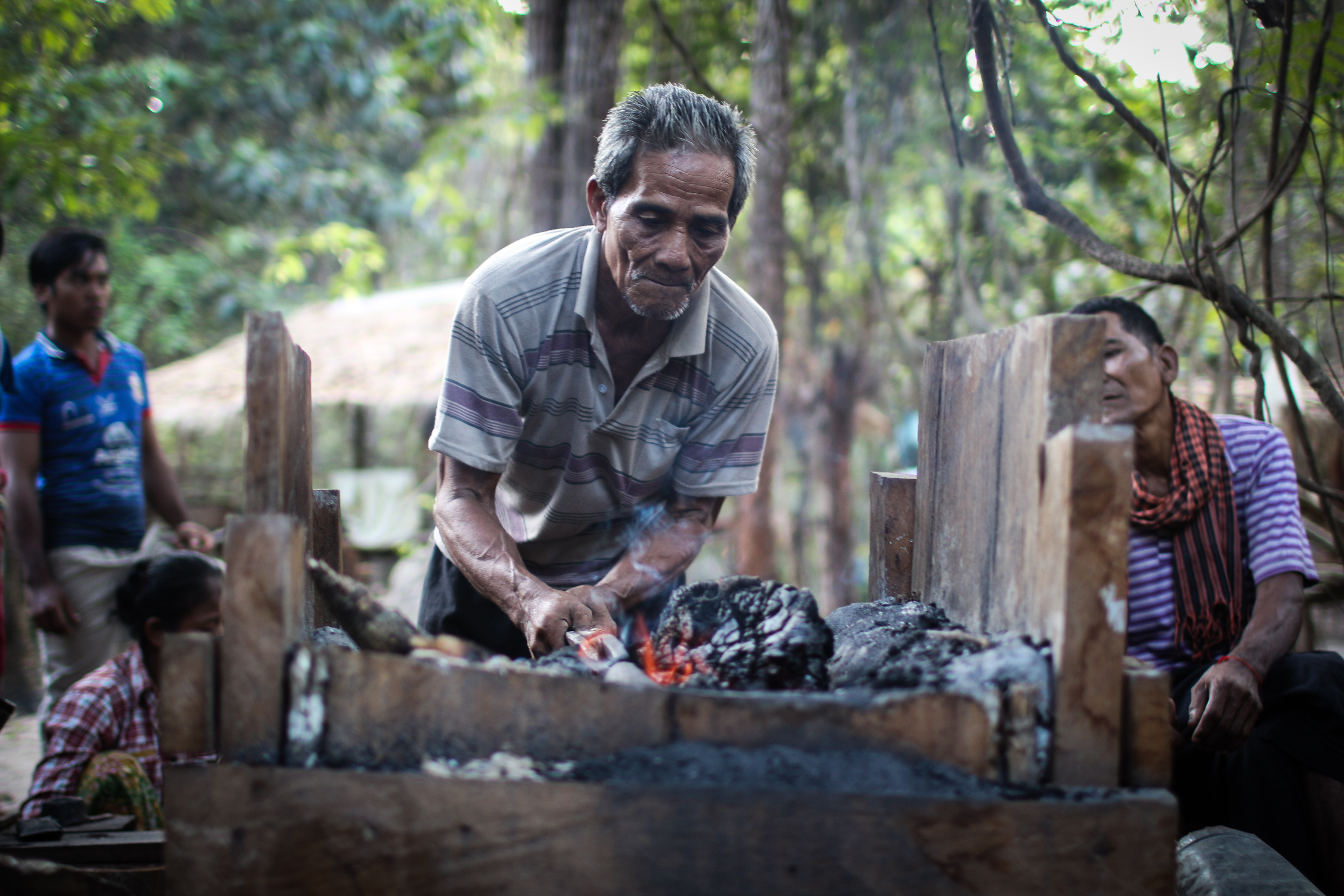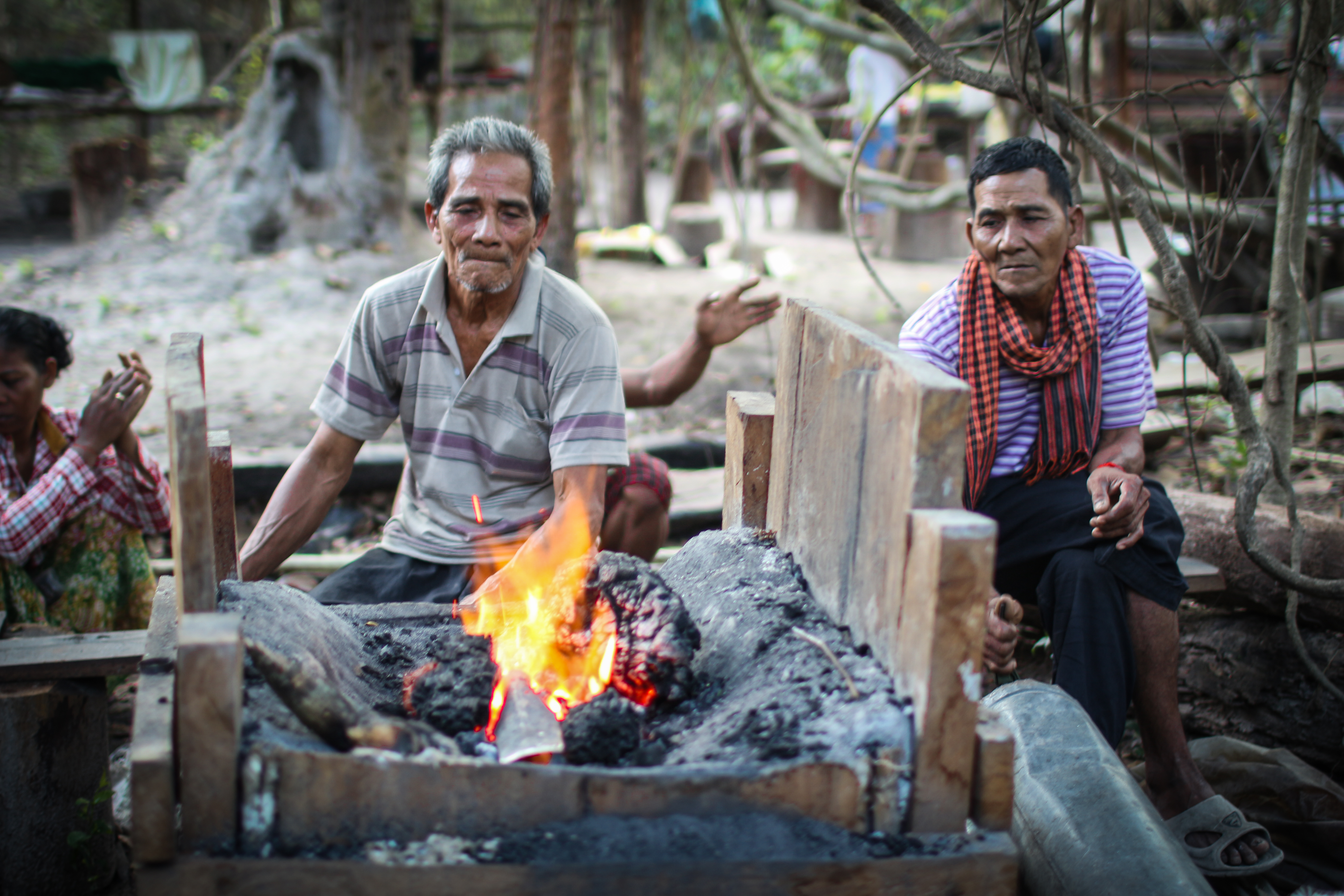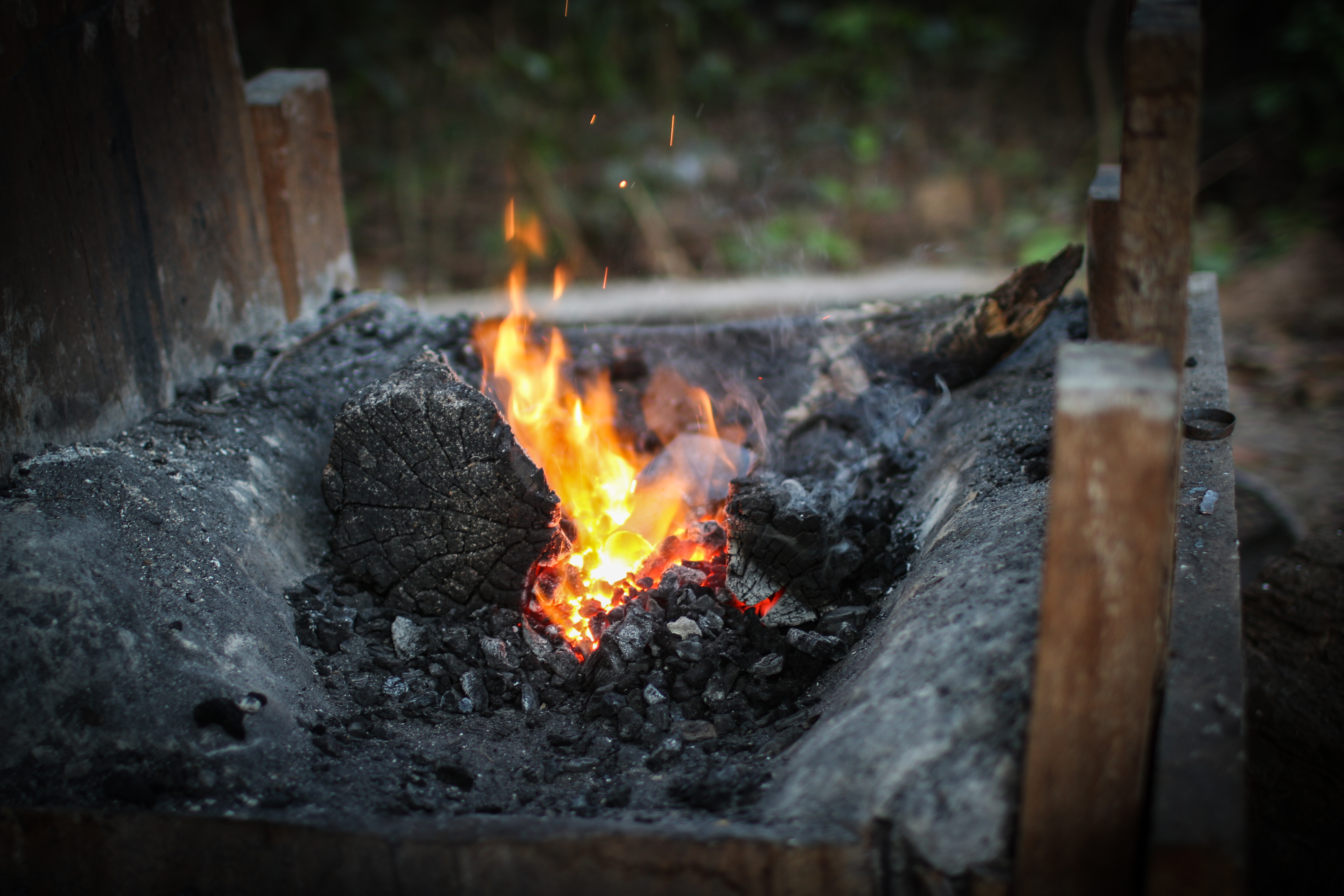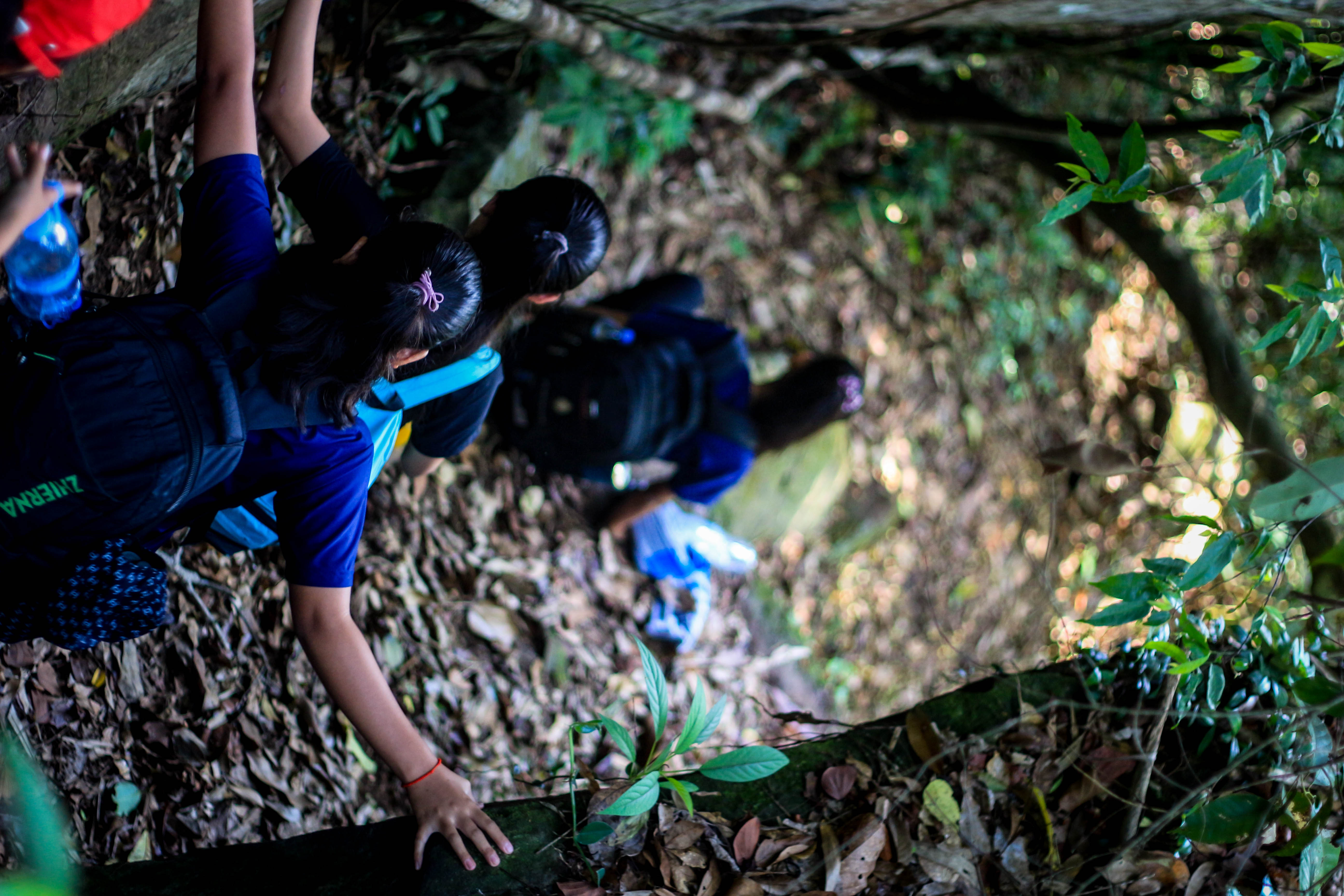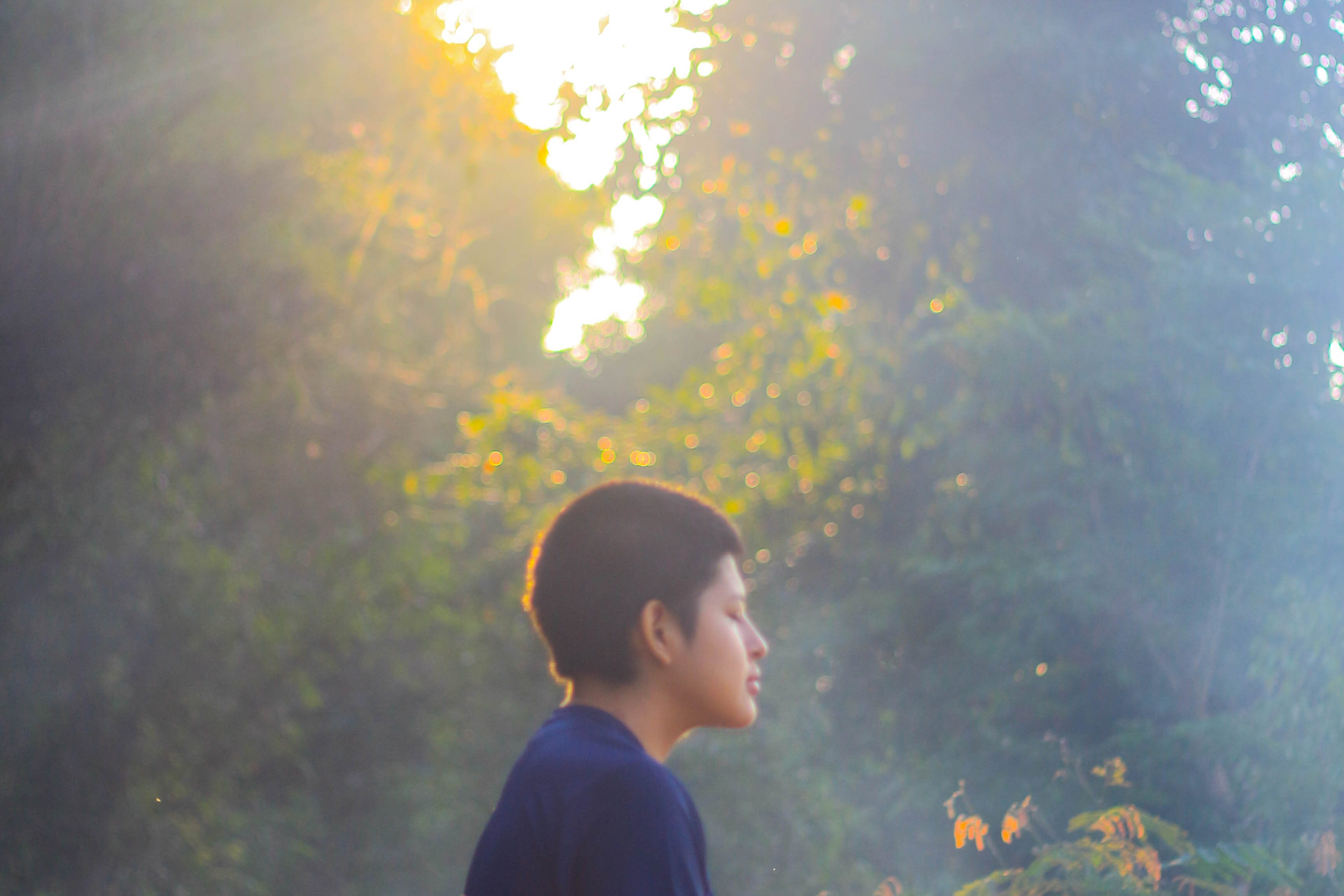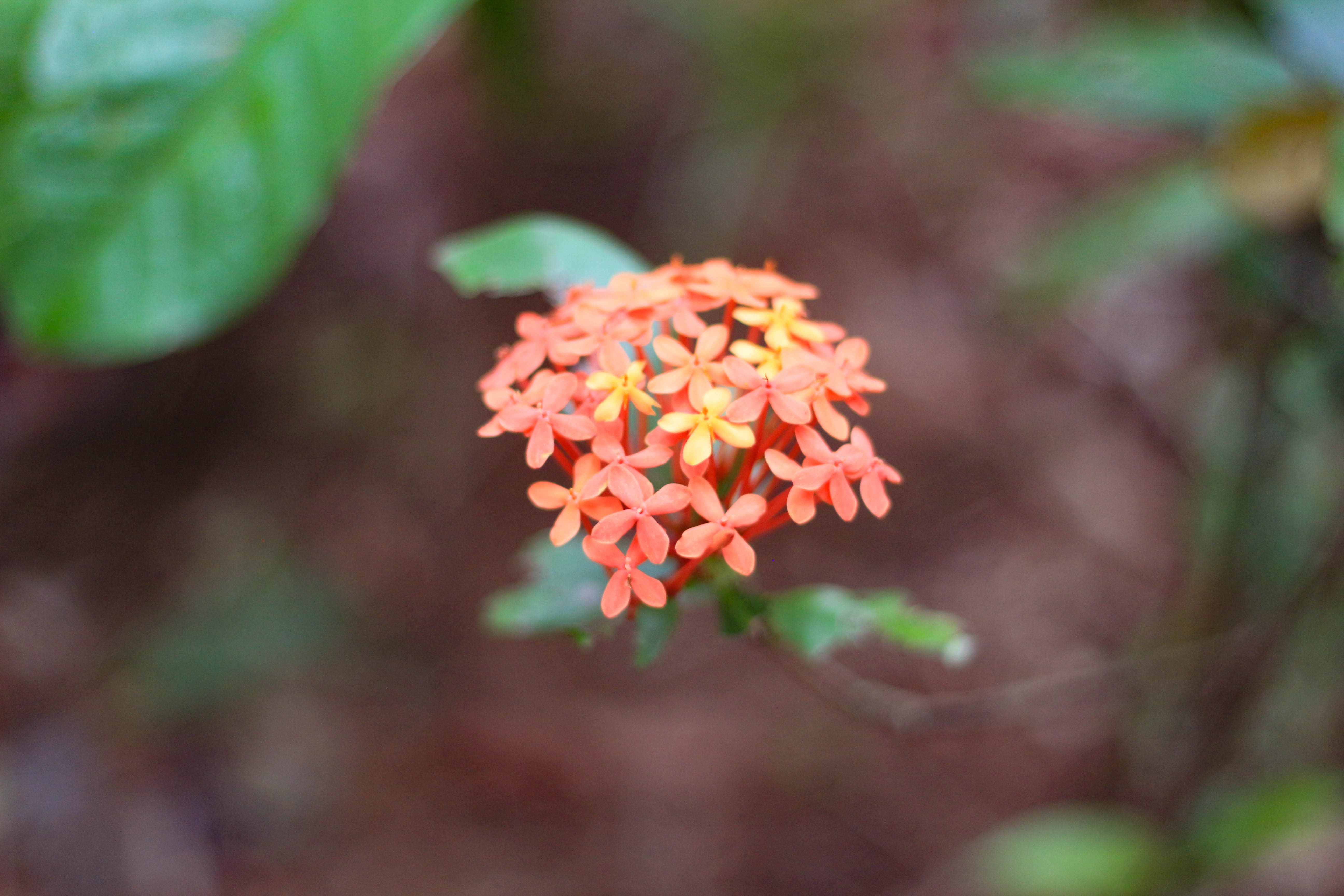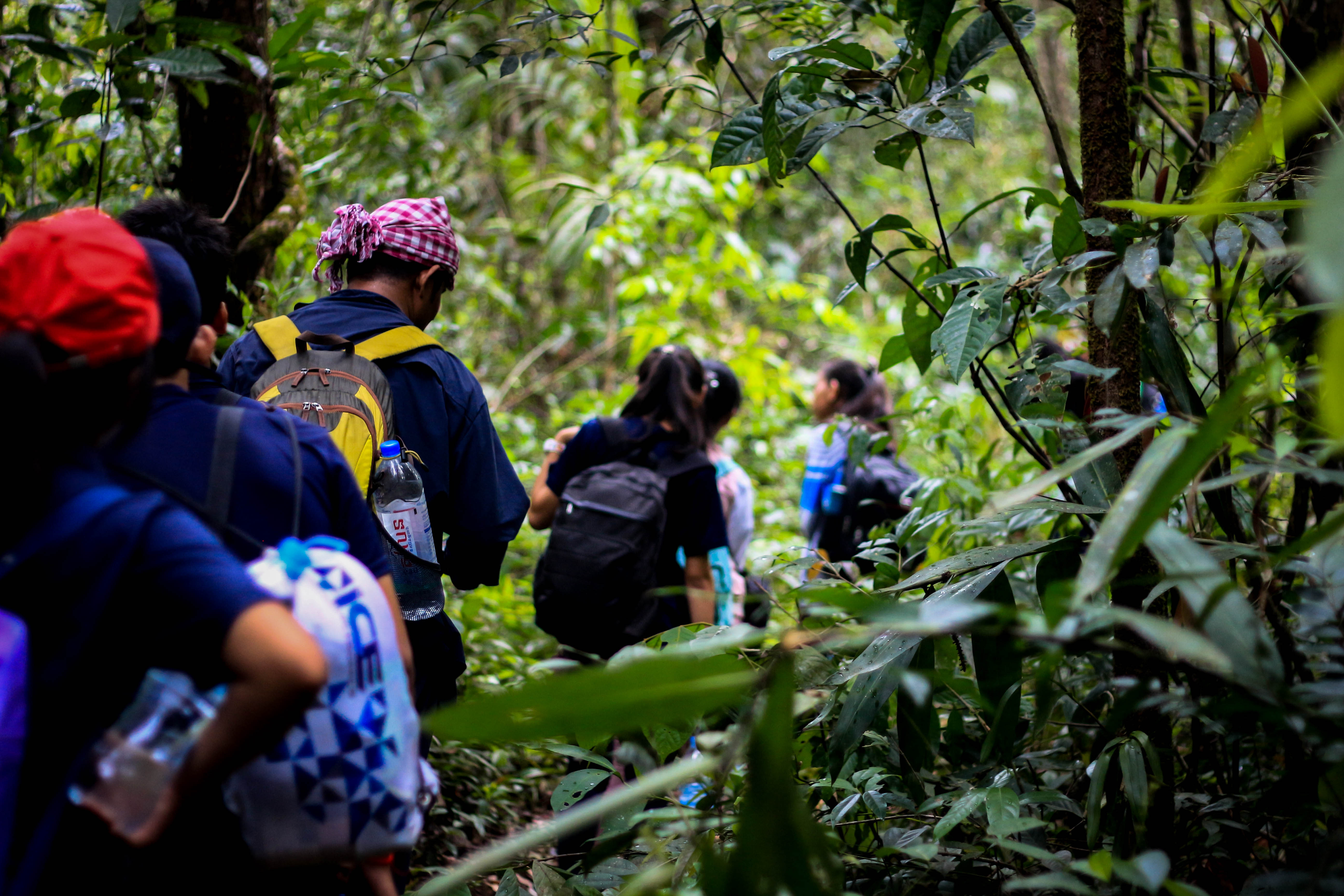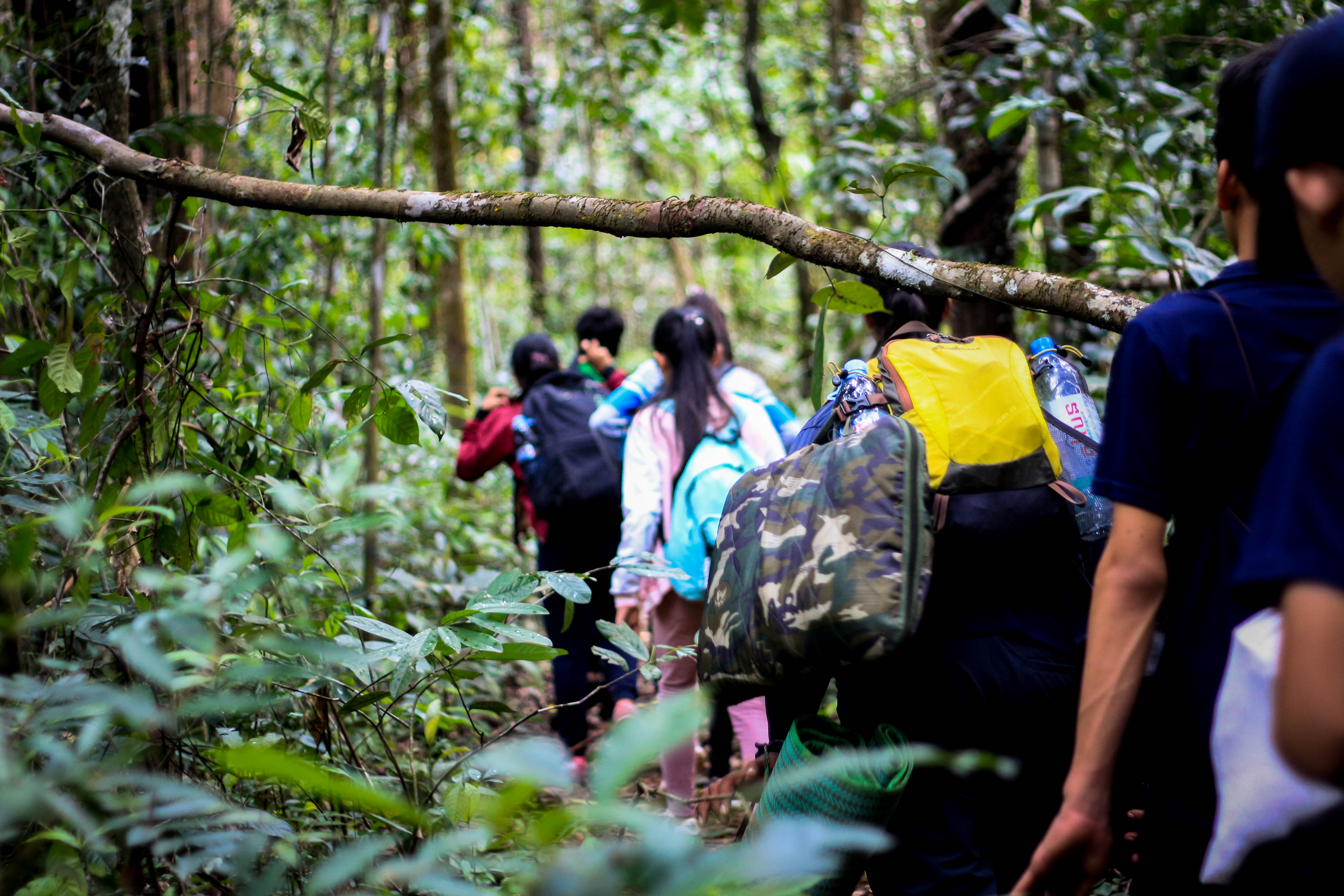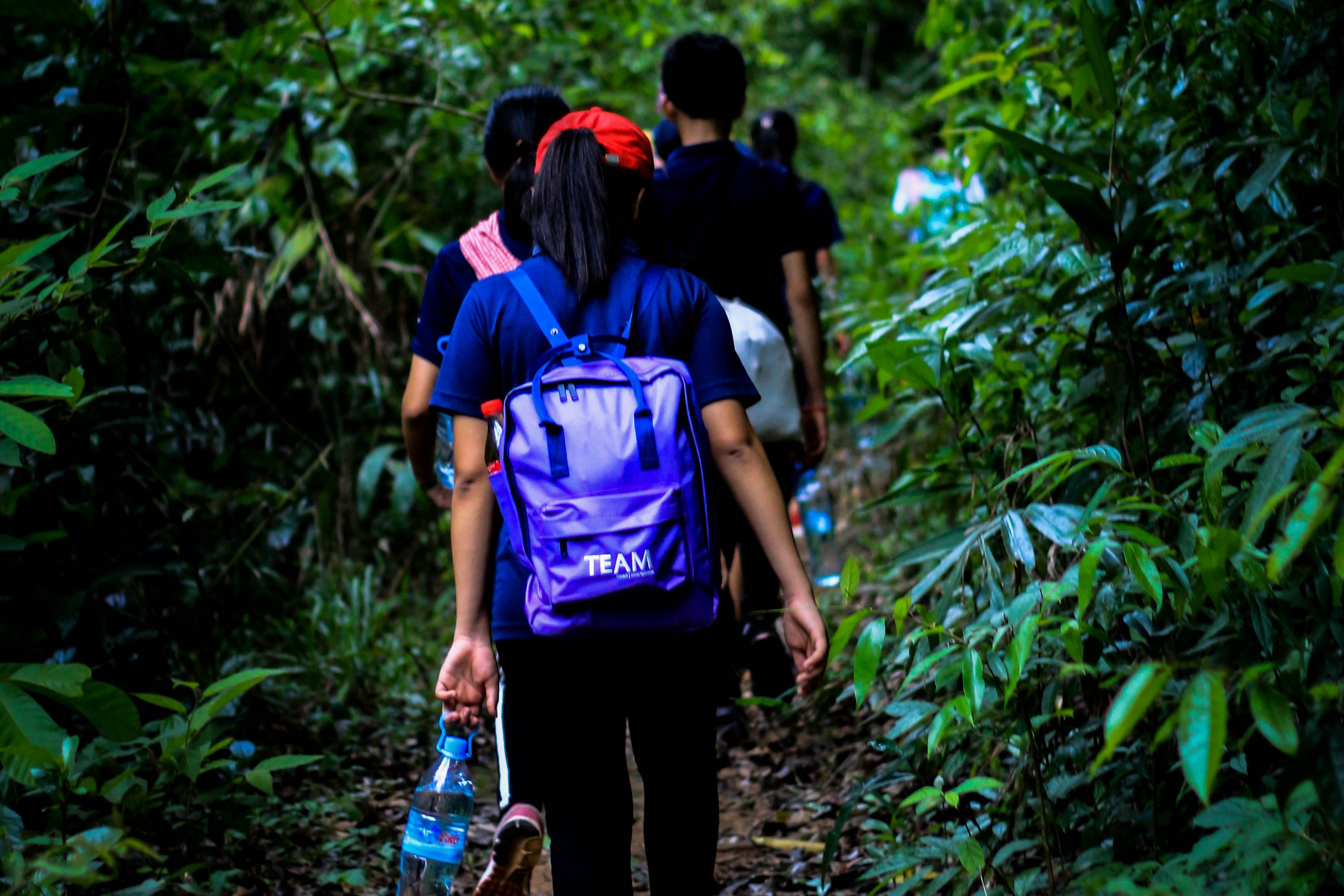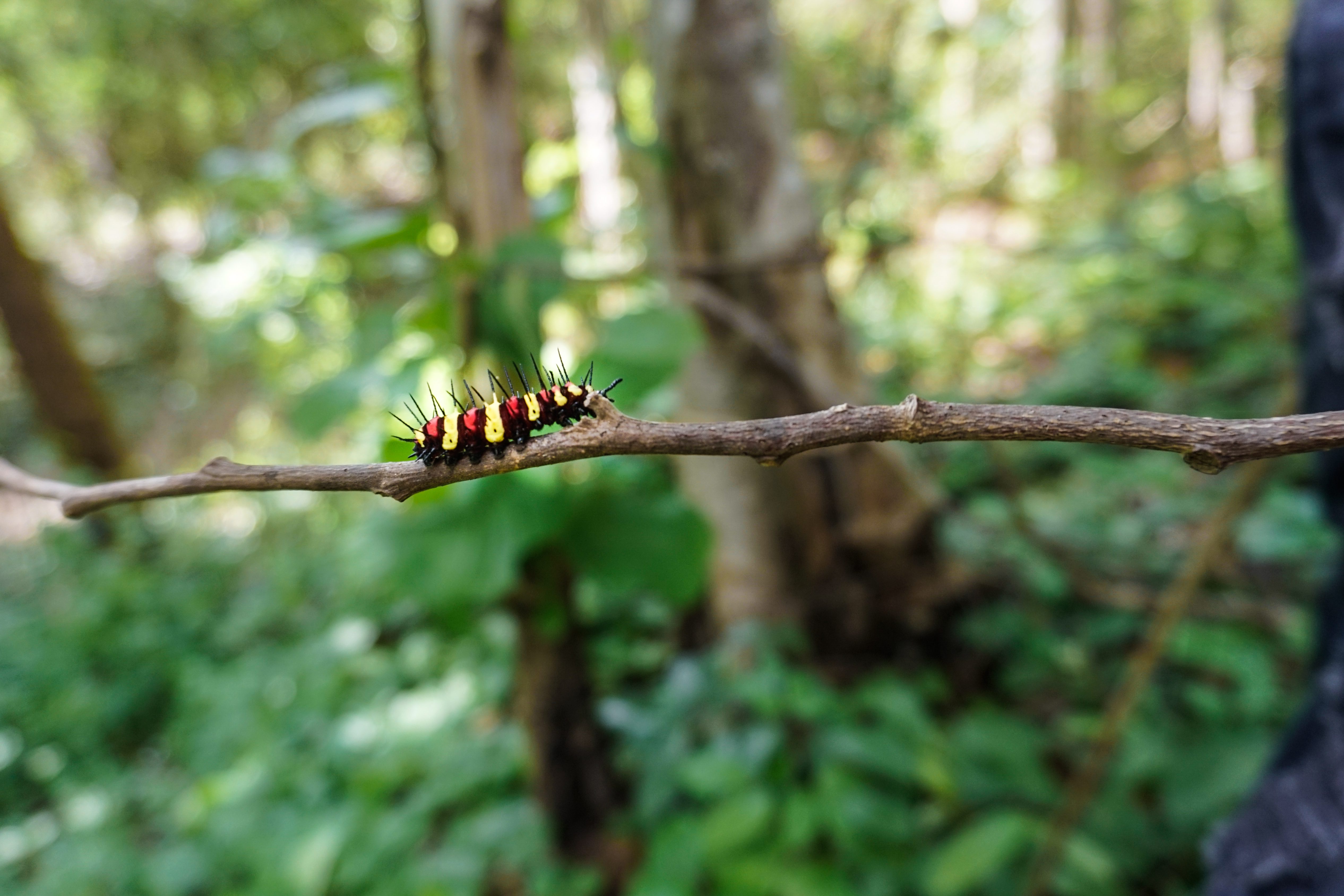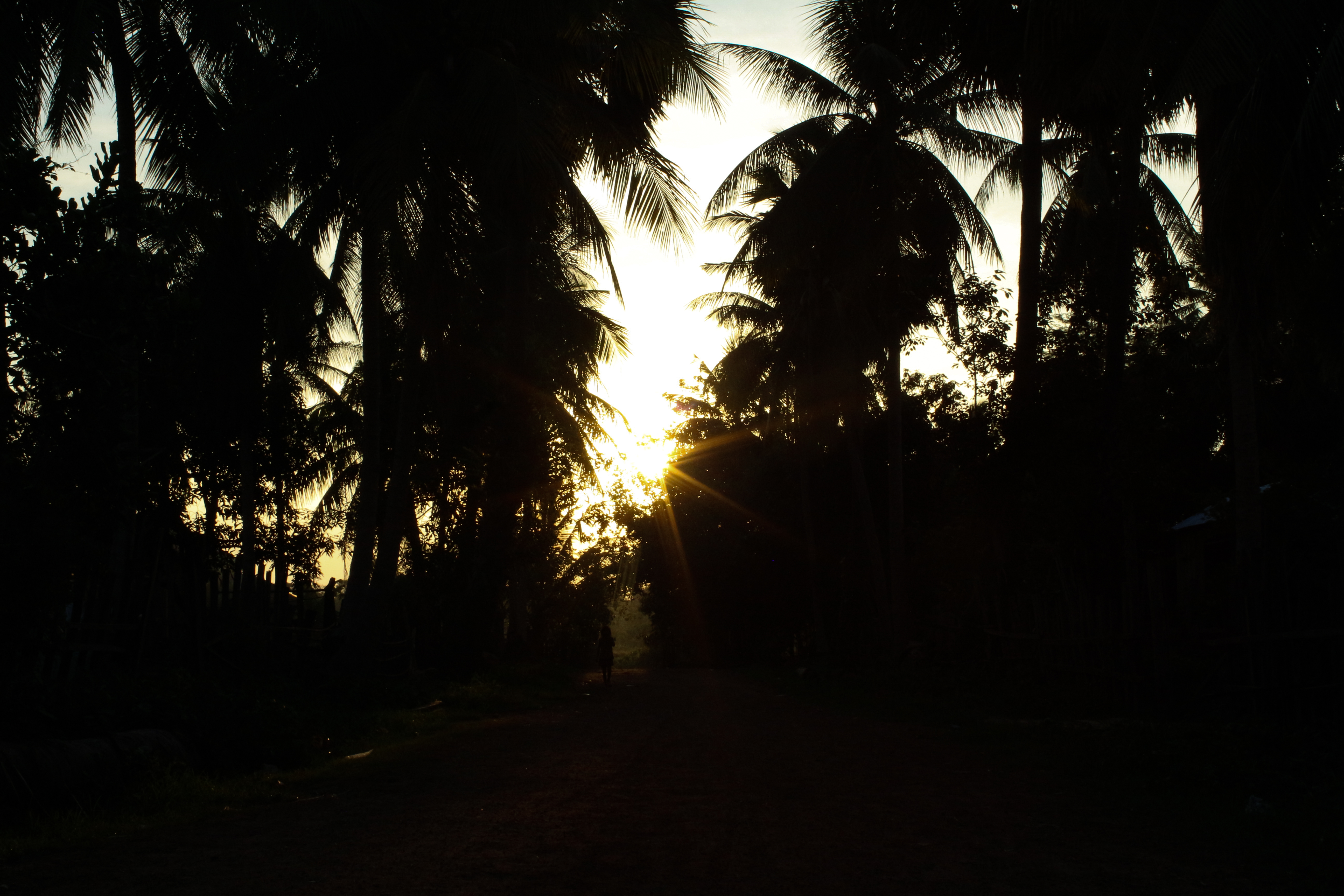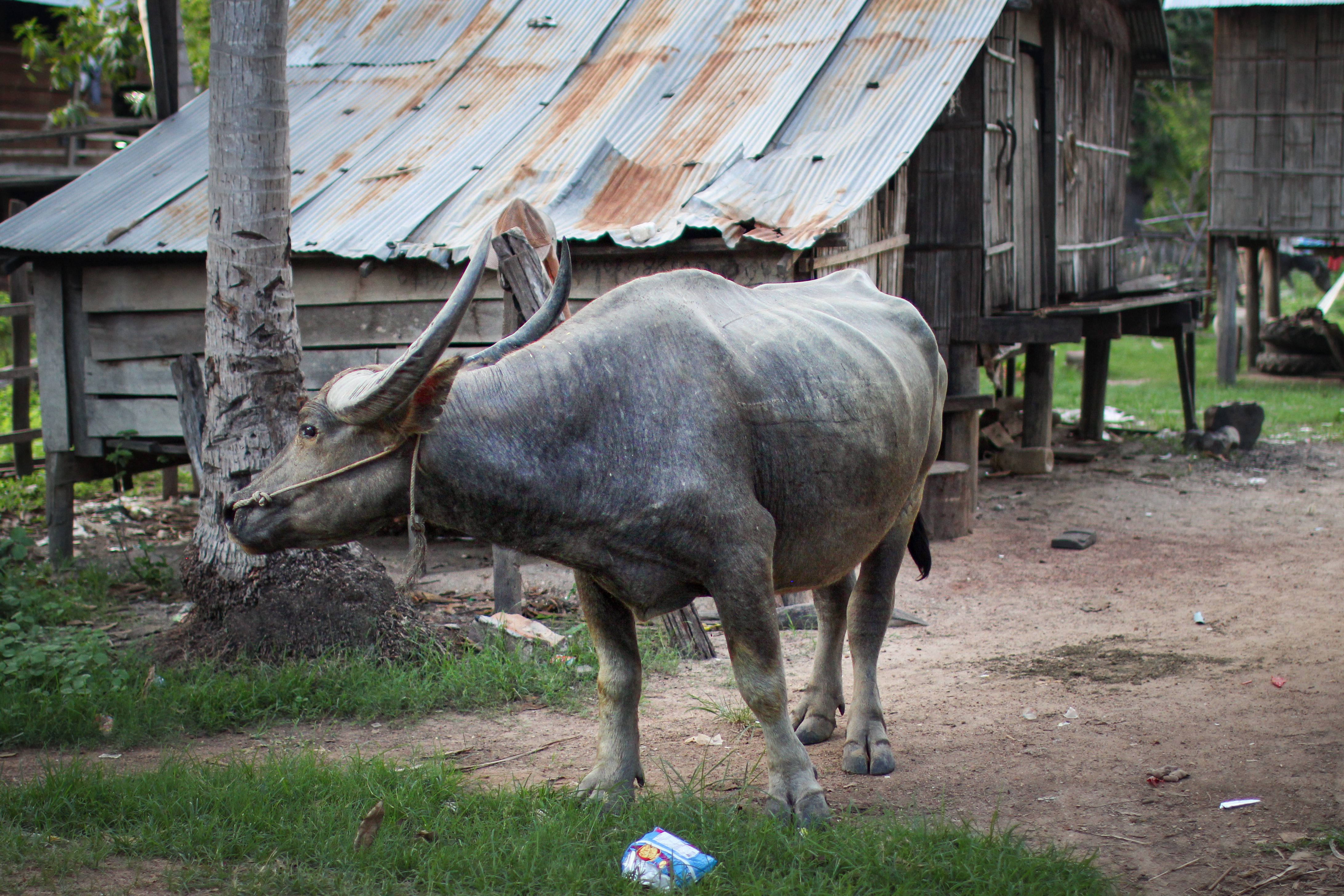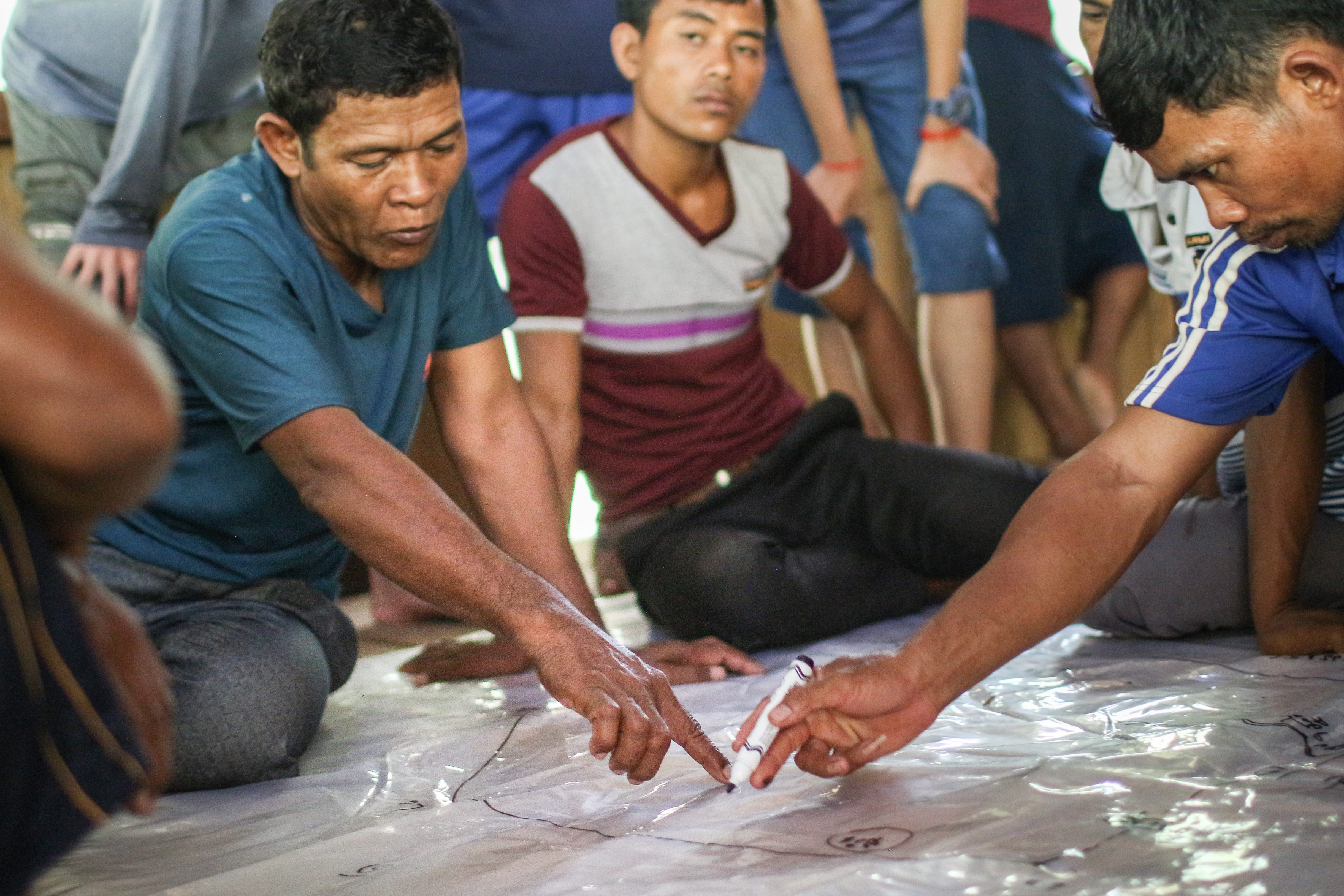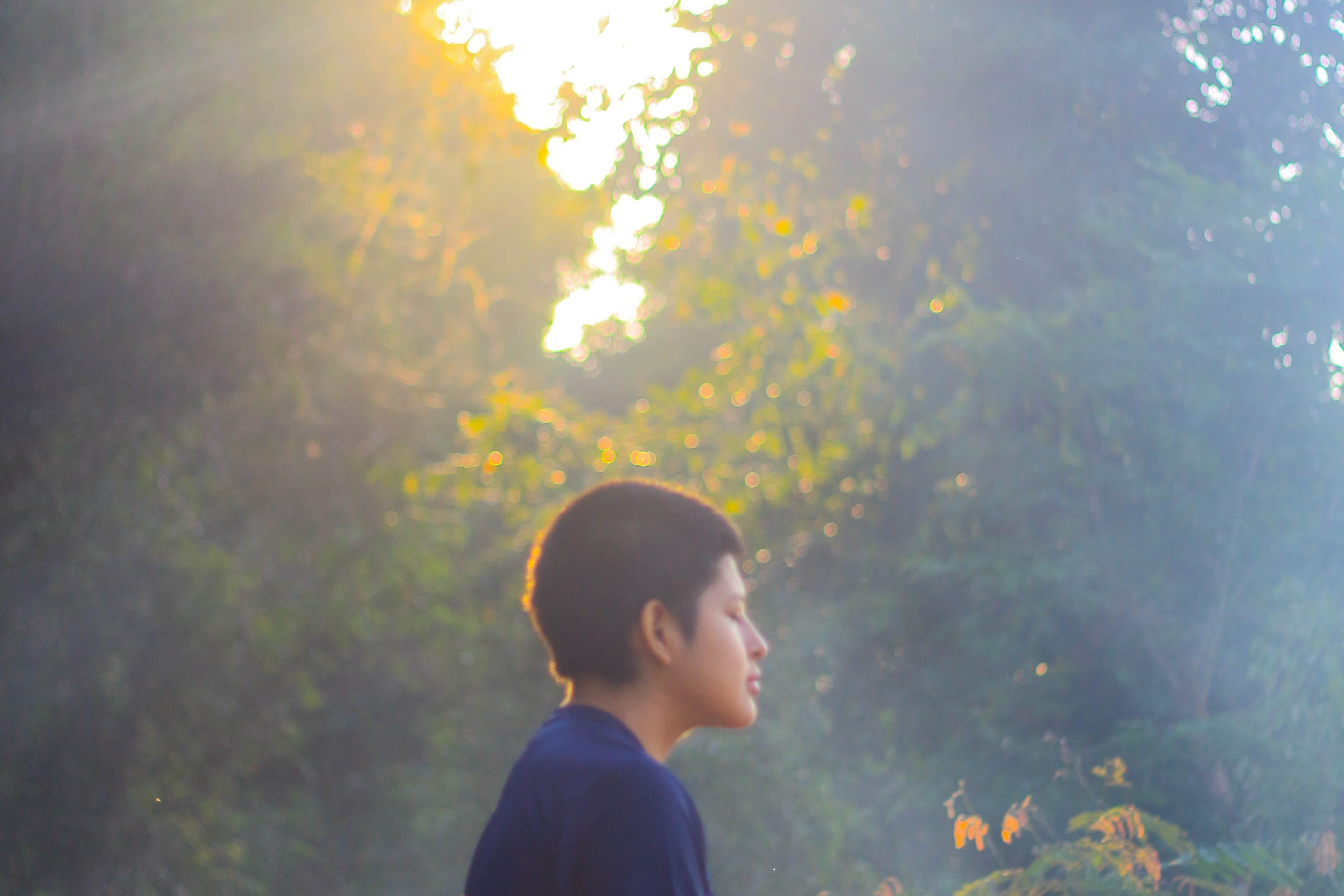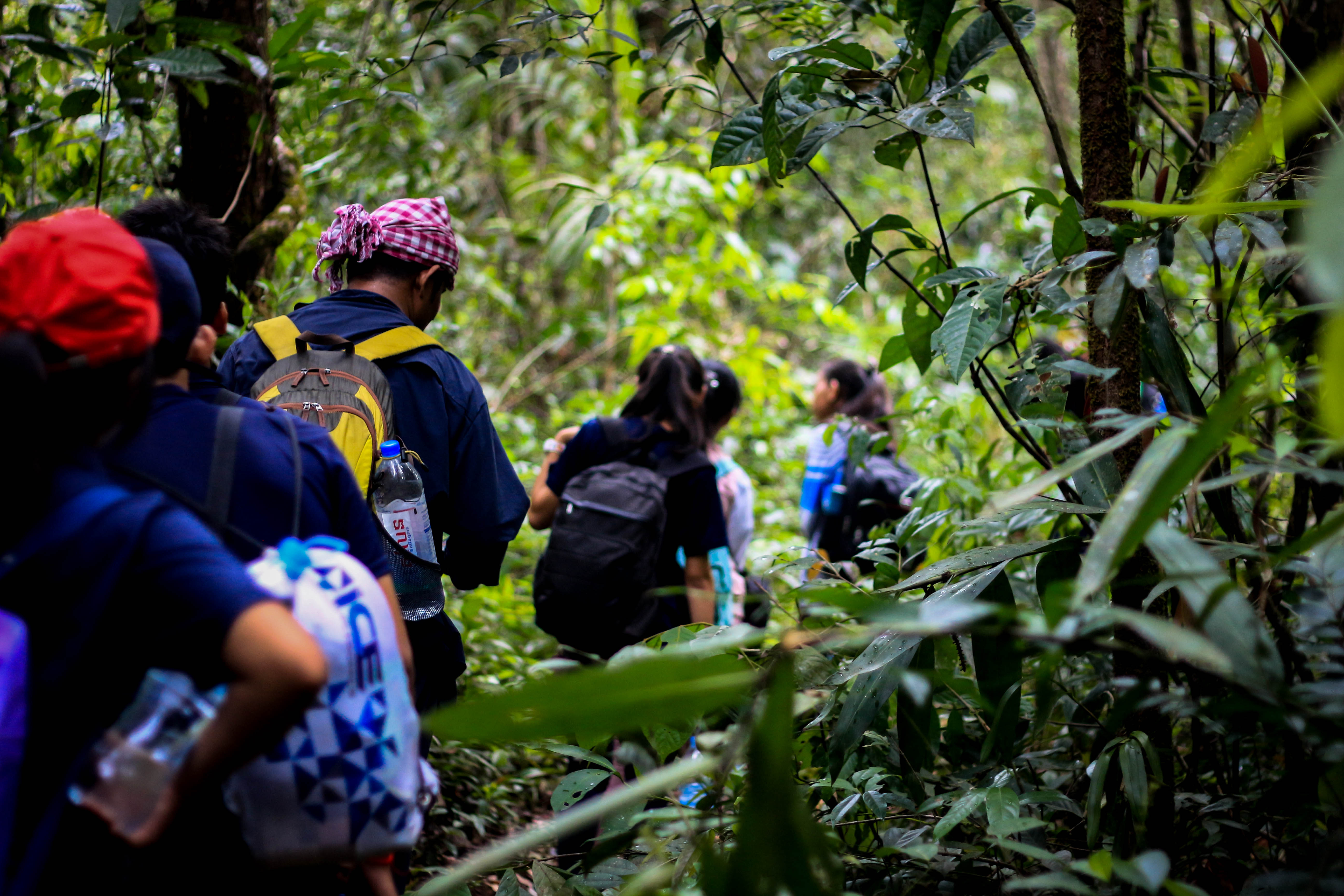If you have ever listened to “Fantaisie-Impromptu,” by Fryderyk Franciszek Chopin, how the year 2019 and 2020 went is no different. This sophisticated piece consists of drastic changes in rhythm that many musicians recognise as one of the most difficult compositions to play in classical music. The noticeable changes in rhythm are comparable to the situations of 2019 and 2020. Exhilarated and depressing notes battling each other in every bar are similar to how we decided what we should feel about every moment throughout the years.
Unanticipated change can happen, for instance, the COVID-19 outbreak. It spun the whole world! Each country suffers from different economic crises and has to adapt to the unpreventable change, even if it means that schools have to close for individual student’s safety. Nations around the world, regardless of the infected patient’s status, affirm a high level of precaution, and treatments. Fortunately for Cambodia, the outbreak hit in early 2020, which was the middle of our fourth school year. Liger, at that time, could not do anything but to follow the Cambodian government’s regulation by closing the school for a short period of time. Now, winter can still be a season without snow, and day is still brighter than night even with a sky full of clouds. We can all agree that we were living in a time of uncertainty, but likewise, my fourth school year at the Liger Leadership Academy did have joyfulness, excitement, and positive impacts on which to reflect.
Before getting any further on my impact-reflection, you have the privilege to understand more about Liger. Liger Leadership Academy, my knowledge and wisdom fountain, is a project-based learning school that chooses students from all around Cambodia who have the most potential to become future change-agents of Cambodia. What is project-based learning, you might ask? Well, project-based learning is a learning method in which students gain knowledge and skills by exploring and solving the real-world challenges and problems as a long-term or short-term project. A project is successful or failed does not matter. What matters is the experiences of processes that the students acquire from the project. It is peculiar, one could say, because it could be a contrast to the traditional teaching methods to some extent. Traditional teaching methods teach students how to fish in the classroom with a pen, whereas project-based learning has the student at the fish pond with a fishing rod.
Liger Leadership Academy is a project-based learning school, then what is it about students becoming future change-agents of Cambodia? I was once an ordinary boy who was born and raised in Battambang, a province of rice fields located in the northwest of Cambodia, and my life changed at the age of 11 when I was selected to be one of the many “change-agents” at the Liger Leadership Academy. There might be a fancy definition for it, but my definition is be the one to embrace changes, tiny or tremendous, that positively impacts your surroundings. In simple terms, just make someone or yourself satisfied by your generous gestures. Liger has always been pushing our capability to a greater potential through the project-based learning method and the “change-agent” motto. This year, creating a positive impact no longer on my life reminder list. Every morning, a simple question arises in my head, “what can I do to better yesterday, or last week, or last month, or last year?” It has been buried in my action, speech, and thought.
Chopin combined two simple notes, G2# and G3#, powerfully set the introduction of his melodious tune. In all of a sudden, hundreds of notes and chords jump rapidly from one to another, disrupting the simplicity, just like my fourth year. That year was my first diploma year. The same way as how every note contributes to the master piece, every hour that I committed in learning counts. Moreover, it was also the final year at Liger for our first cohort. They are the first group of students to graduate at Liger. I will miss them very much, and these were the two things that staff and students have to deeply note the rest of the year.
My third year ended with one of my most impactful projects, and that first diploma year began with another. Those excitement-striking notes is the feeling that I get when I think about Cambodian Youths Outdoor Leadership Program, the succession of the previous year Outdoor Leadership Exploration. This funded project had the ultimate mission, “to empower Cambodian youth to be outdoor leaders and environmental stewards by introducing them to natural spaces, raising awareness of conservation threats, and nurturing the passion and skills needed to positively impact their communities.” It took 21 weeks, or 3 rounds of exploration, and 15 students in order to achieve the promise.
The project could be described in three major stages. The first stage had a main focus on designing a module for a one day workshop that delivers the basic but important outdoor lessons and experiences to young Cambodain youths. Many students and I committed our times to research and develop the module. We discussed many thoughts and experimented with different ideas. We took turns testing and provided constructive feedback to each other while also trying to make every activity fun and interactive. At last, we organized instructive lesson plans that were divided into four core sections: Leadership, Nature Appreciation, Medical and Risk Management, and Wilderness Skills. Each section has their unique feel and atmosphere.
For the second stage, the goals were to further polish the module and make it more accessible in Khmer as well as English. For that time, we went out to different schools in different provinces to test the lesson plans. In every workshop that we did, it always concluded with short exclamations from teachers and students. “This felt very different from other learning!” “I want to know more!” “When will this begin? I want to be a part of it.” “Count me in!” I could not stop smiling when I heard these words. The module was still in the testing process, but, somehow, it changed their perspectives of the outdoor environment. We impacted the youths without realizing it. Also, in that same stage, our facilitators threw us a surprise challenge. They let us plan and led our own trip to Aural mountain in Kampong Speu purposely to train us to become outdoor leaders. This was when I realized that I was more than a member of a project. We were becoming the future outdoor leaders!
The objective of the third stage was to create an outdoor leadership guide book to extend our impact on Cambodia youths. The main purpose of the book was to make it convenient for anyone who is interested in exploring and leading themselves or others in the outdoor environments. Many parts of the outdoor module were included. A lot of discussions and brainstorming were made to ensure that the book would be simple but at the same time full of interactive activities for the users. The book was not fully ready for large-scale printing at the end of the round, but holding a test copy was thrilling. In the middle of the stage, there was another surprise. Green Village, a school from Kampong Cham province, interested in the project and decided to take part in the full outdoor program experience. It was challenging even with all of the preparations, plannings, and practices, but the program successfully ended.
Cambodian Youths Outdoor Leadership project took a tremendous amount of time and effort to build, and the result was worth every drop of sweats. Every success has risks and challenges as a shadow, and this project is the perfect example. That is why the blistering introduction of Fantasie-Impromptu could wordlessly remind me of the impacts in Cambodian Youths Outdoor Leadership that I was a part of.
Two rounds close to the end of the year could sum up to one word, “restless.” This is alike the end of Fantasie-Impromptu’s exposition before unveiling the sudden drop in rhythm. The first cohort worked relentlessly, with the help of different Liger’s staff, to complete their diploma’s requirements. In the requirements, creating an impact statement was one of them. Unlike any other year where they write an essay, that year, it transformed into their choice of impact project, and they were given the whole year to work on.
Each one of the students created and led unique projects that individually tackles different real-world problems. I was asked to join two of the impact projects to help speed up the progress. One of the projects creatively demonstrated the problem with the loss of Cambodian ancient artifacts as a circus show. Whereas the other project was planning and preparing a Khmer Literature and Culture Festival. Even though I was not directly making the impacts, it is always delightful to know that I helped the projects to move on, which eventually created the impacts.
Despite the fact that four-fifths of the school year was filled with excitement and tension, just like the melody of the piece slows down, the rest of the year also had to adapt to the unforeseen change – Covid-19 outbreak. Before Liger was closed, some staff members and all of the students had to stay locked down for 14 days. During the period, we had to learn remotely with a few classes that there were no facilitators’ presence. It was difficult to communicate, but we were able to finish the necessary work. After all, even if the candle died in the middle of the darkness, the journey was still half-way light!
And remember, the music slows down; it does not end!
We can all agree that Covid-19 was a negative change, but it is up to us to see it as opportunities or obstacles. At home, I spent a lot of time observing myself, especially my mental health, to understand how it changed. I believe that mental illness is a silent assassinator. It could kill us at any time if we are not careful. At the same time, I also reflected on Buddha’s teaching, my parents’ priceless advice, teacher Sokha’s, and Dom’s warm remark that similarly says, “No one will be there to help you but yourself!” With all of the experiences in my life, I agree with no doubt. Time moves on so does everyone’s life. In the end, it is you that will live with yourselves forever.
In addition, I found that I am an auditory learner. I can remember more, understand more, and perceive things at a faster paste when listening. It had always been one of the questions that I could not answer. Now, I have the answer. I know my strengths and weaknesses. Furthermore, I discovered a new passion in reading as well. Before, I admit that I was not a reader. That was because I could not find the kind of book I was interested in. Personally, I knew that I wanted to improve my reading skills, so I pushed myself to pick a book. After a few weeks later, I realized that informational texts and strategy books suit me better than fiction. Those were tiny changes, but they were still changes.
After the alluring transition, Fantaisie-Impromptu replicates its exposition, and I see it as a new beginning – the beginning that overflows with fun and excitement again. Without the change in rhythm and melody, this iconic piece would not be as famous as it is now. My fourth school year is no different. Without the outbreak, that year would have been just like any other year. It is true that Covid-19 was a negative change that greatly impacted everyone, but it has also allowed us to explore new adventures, led us into new directions, and challenged us to question our knowledge to a greater extent. I would not have learned or discovered anything new about myself, and 2019 and 2020 would not have been marked as “special.” That sudden change is what makes the melodious piece live. If Chopin were to use the same notes, rhythm, and melody, Fantaisie-Impromptu would have been forgotten.
